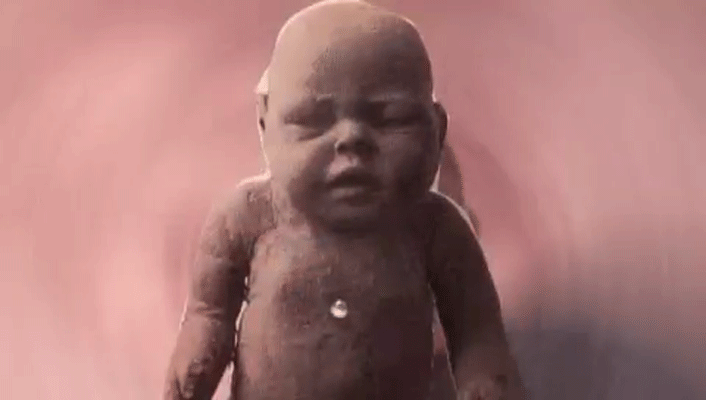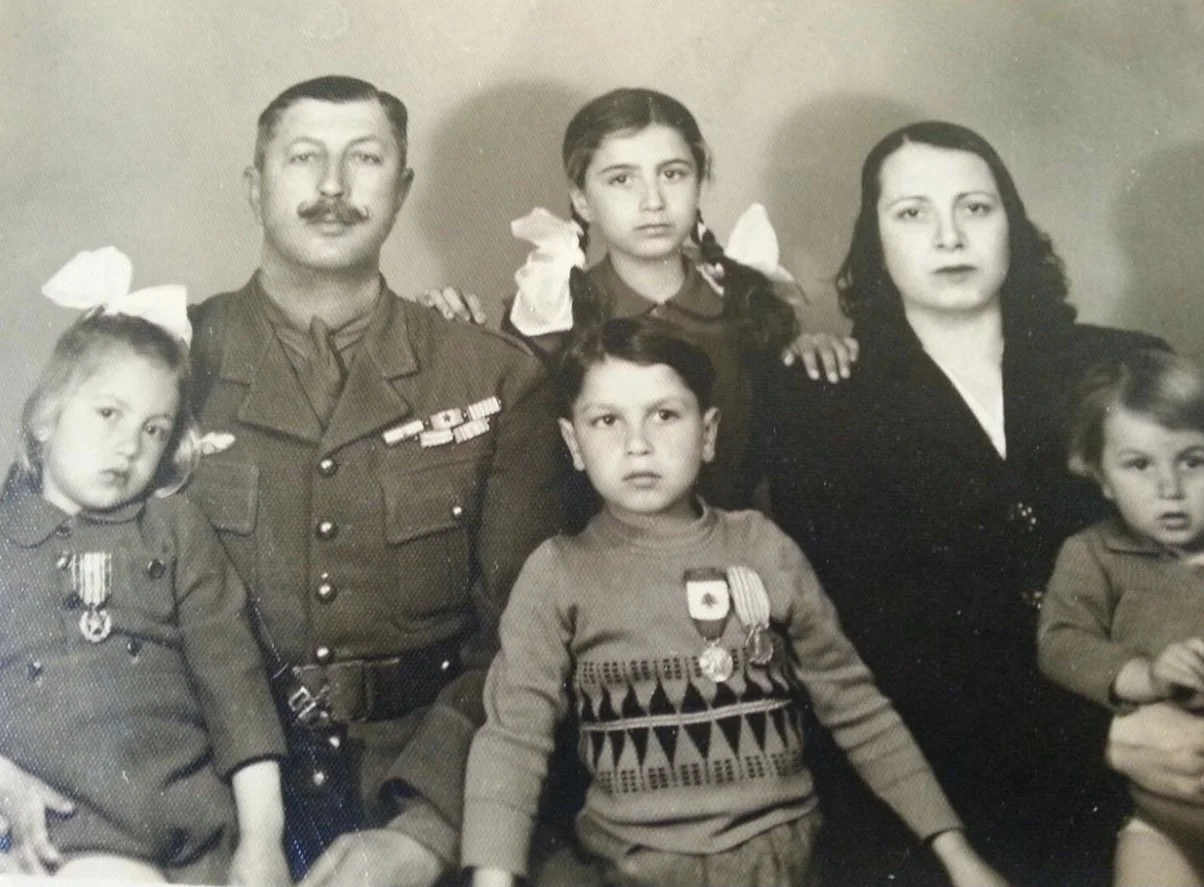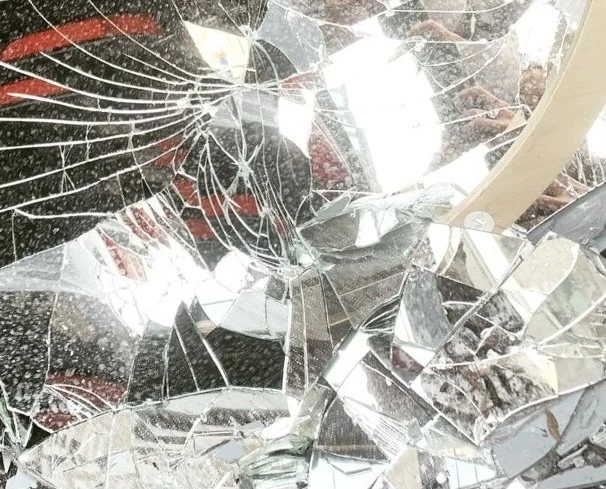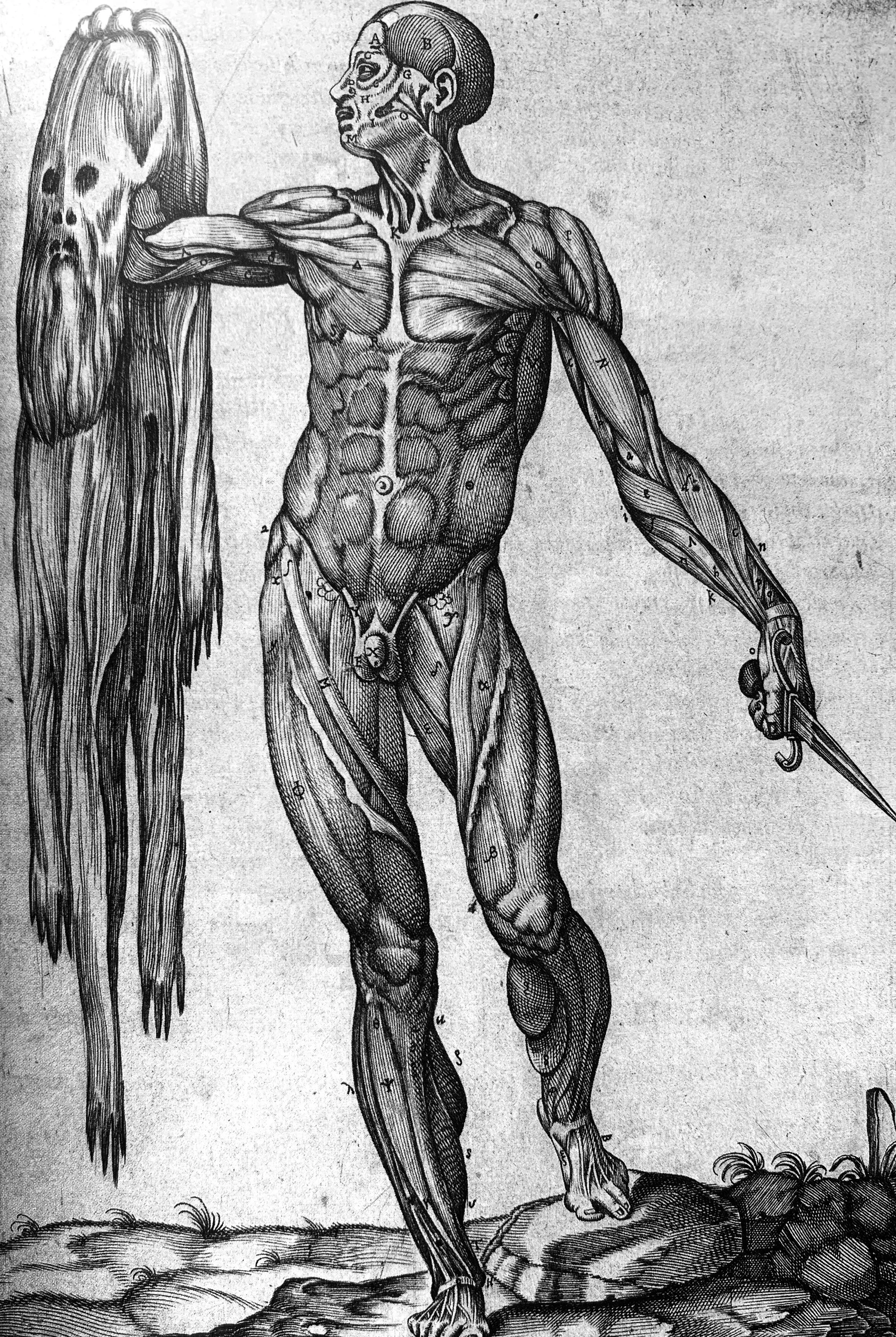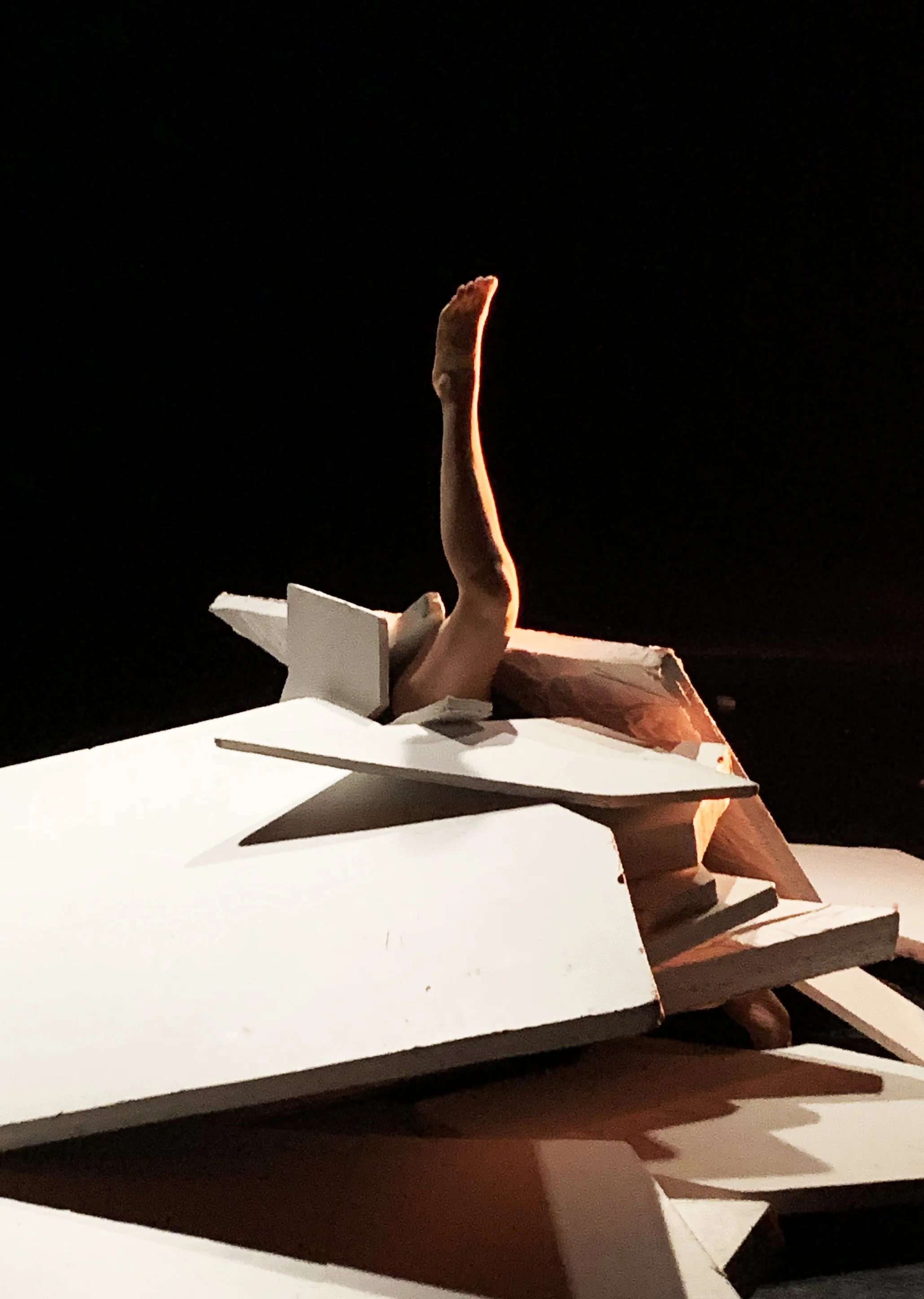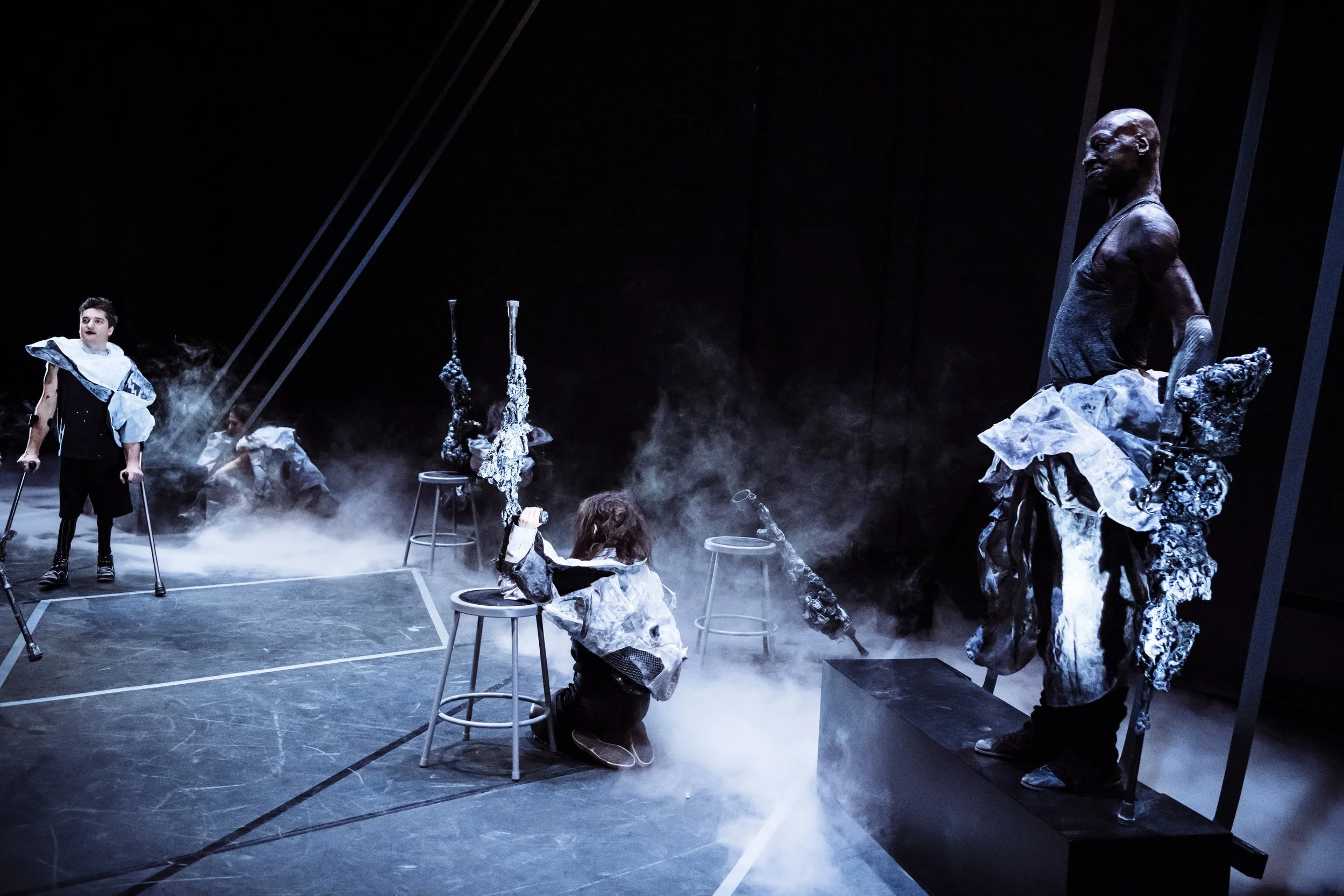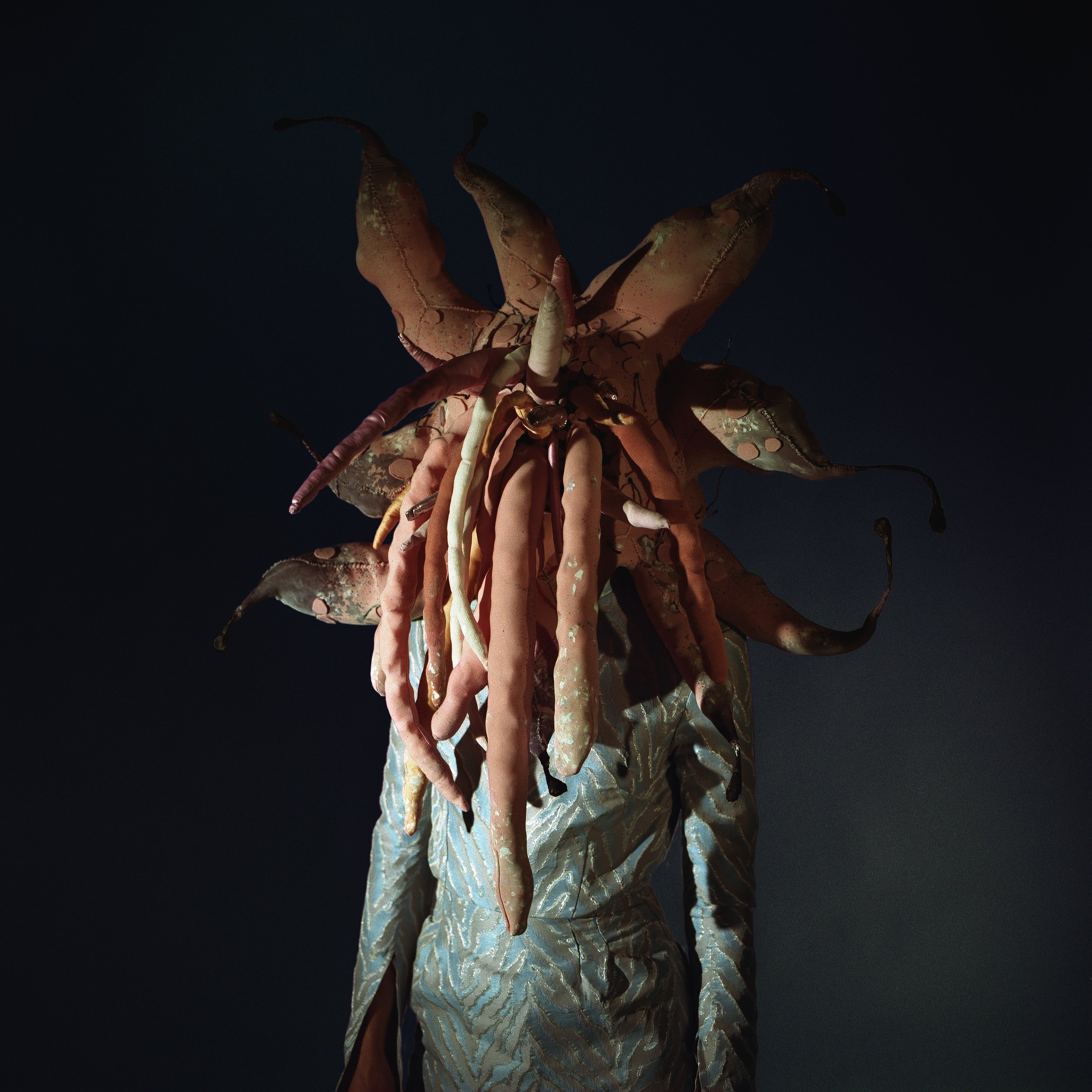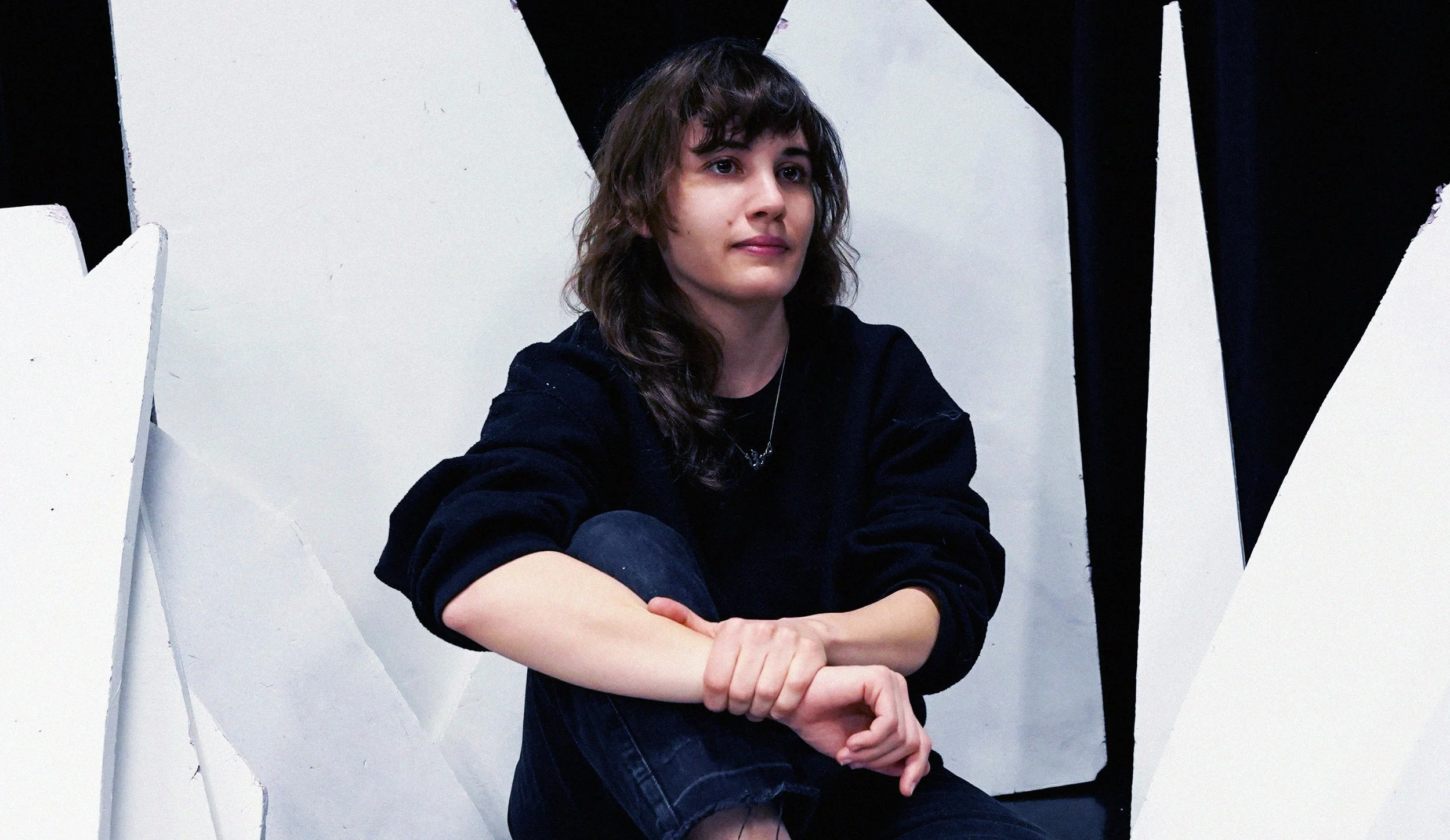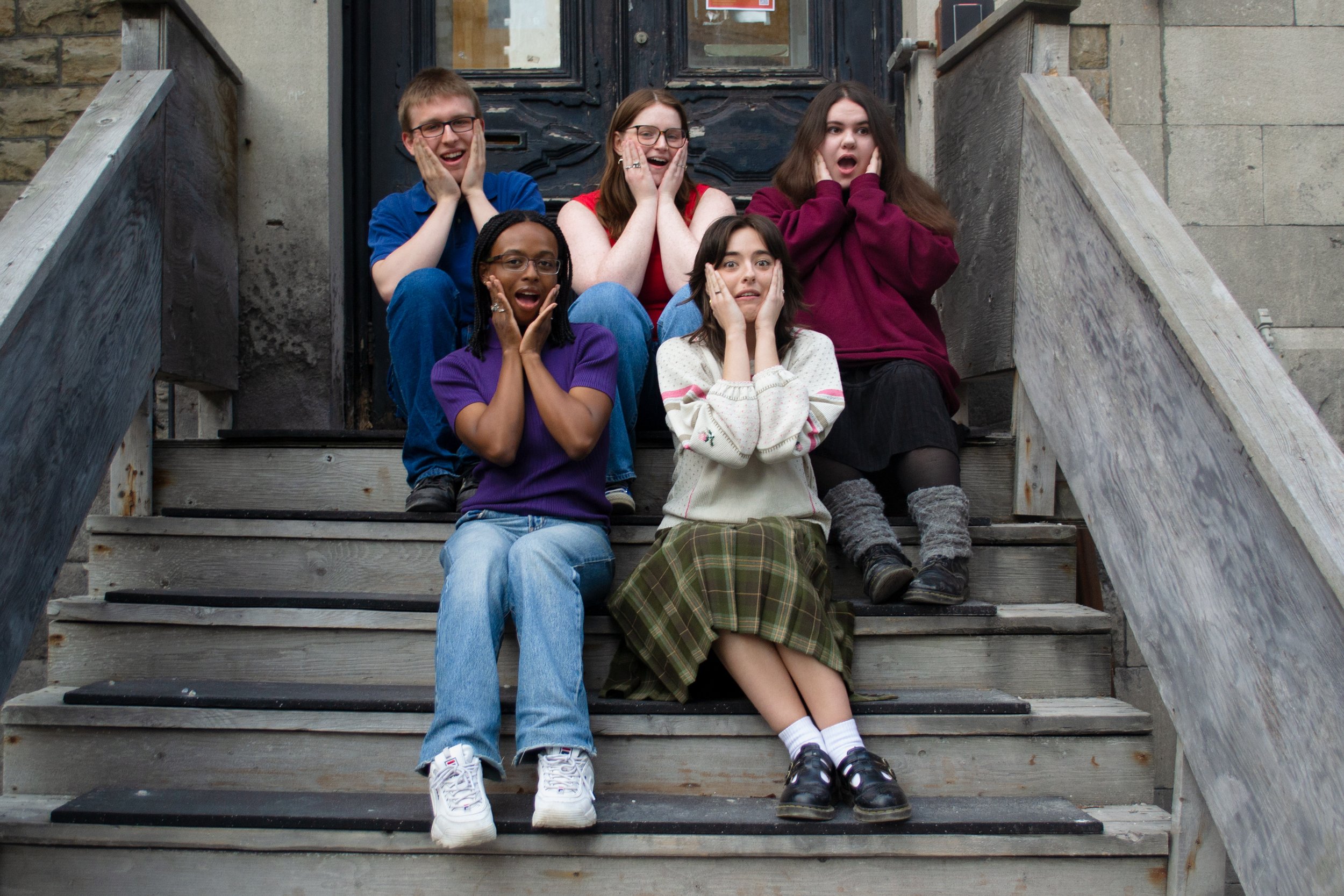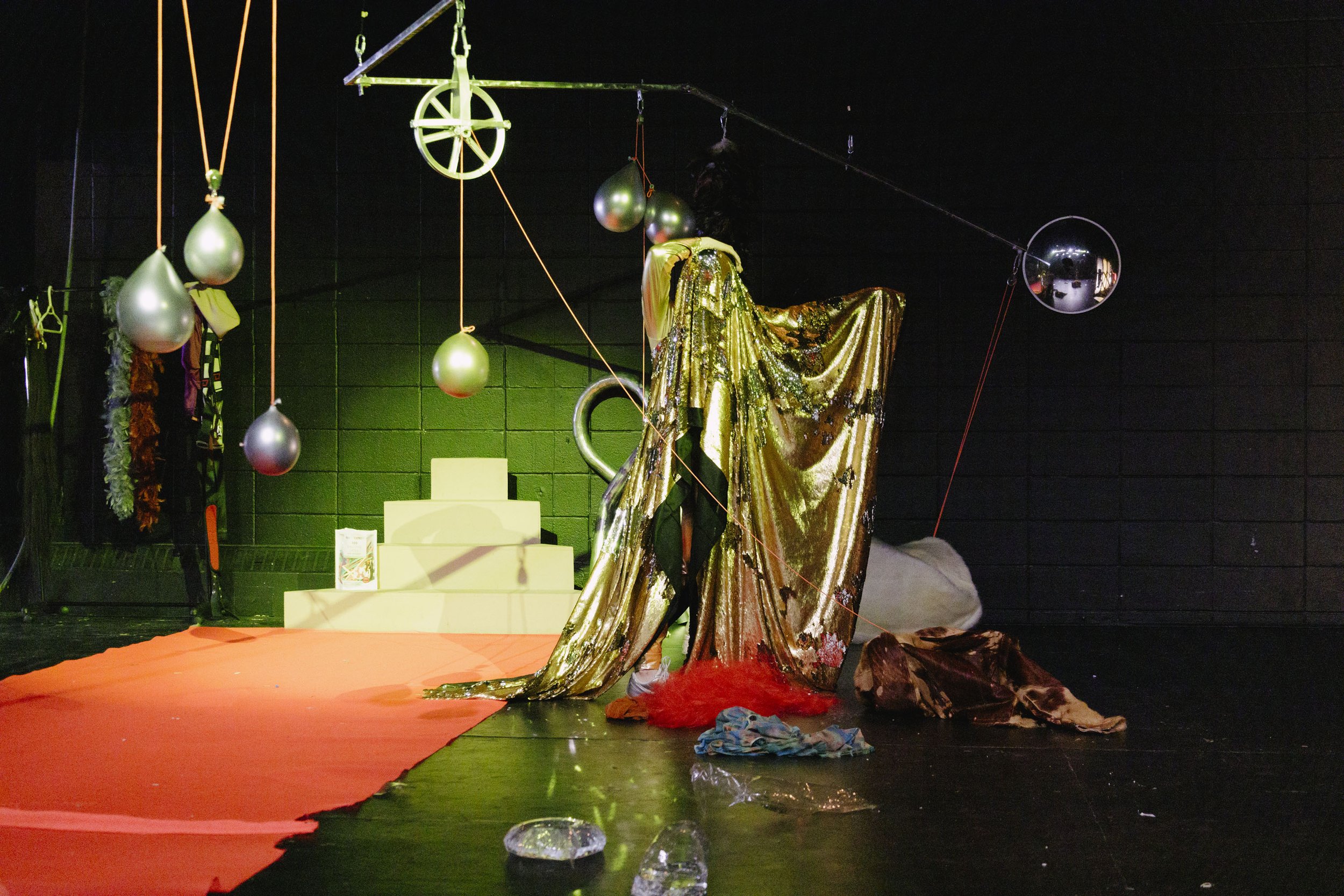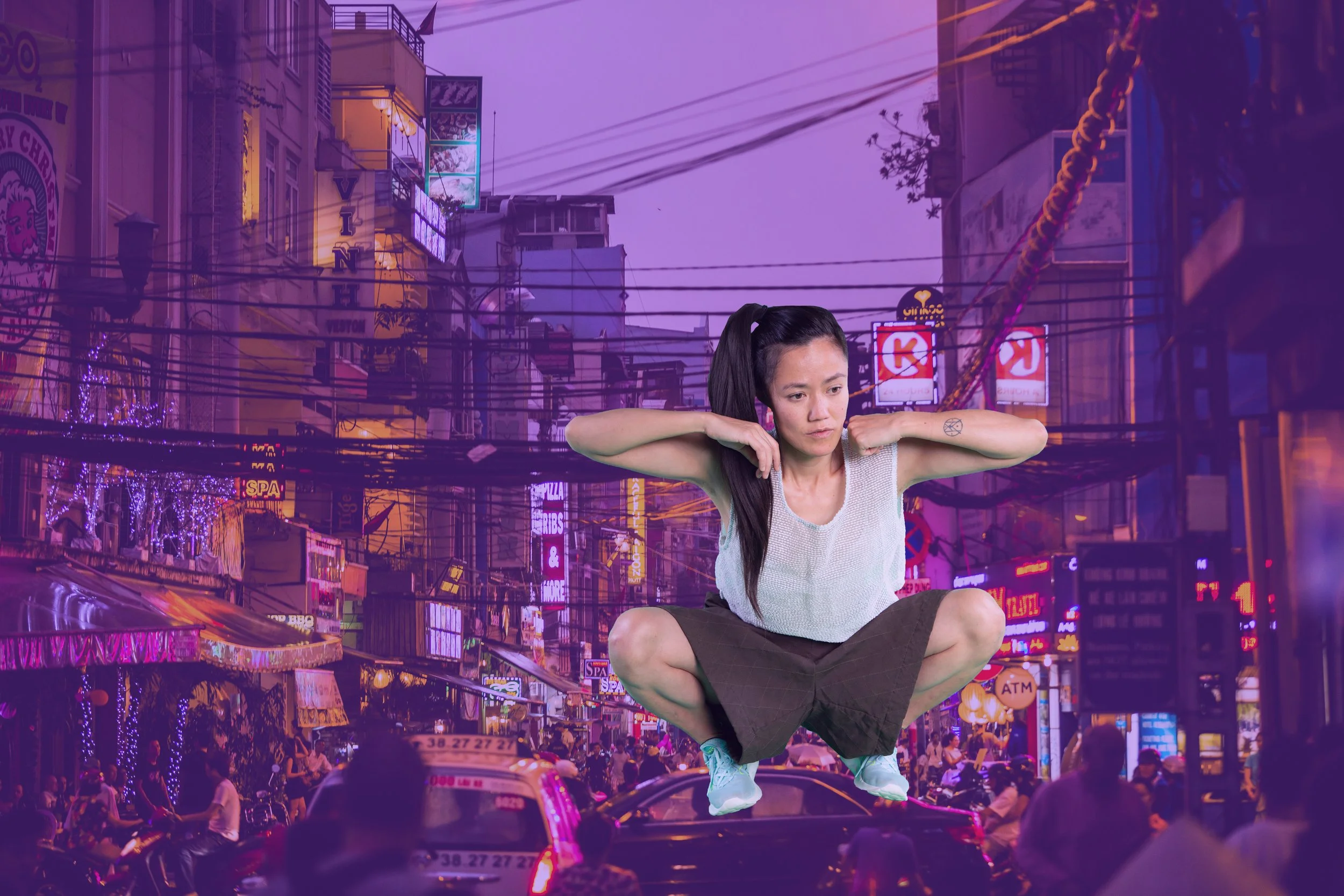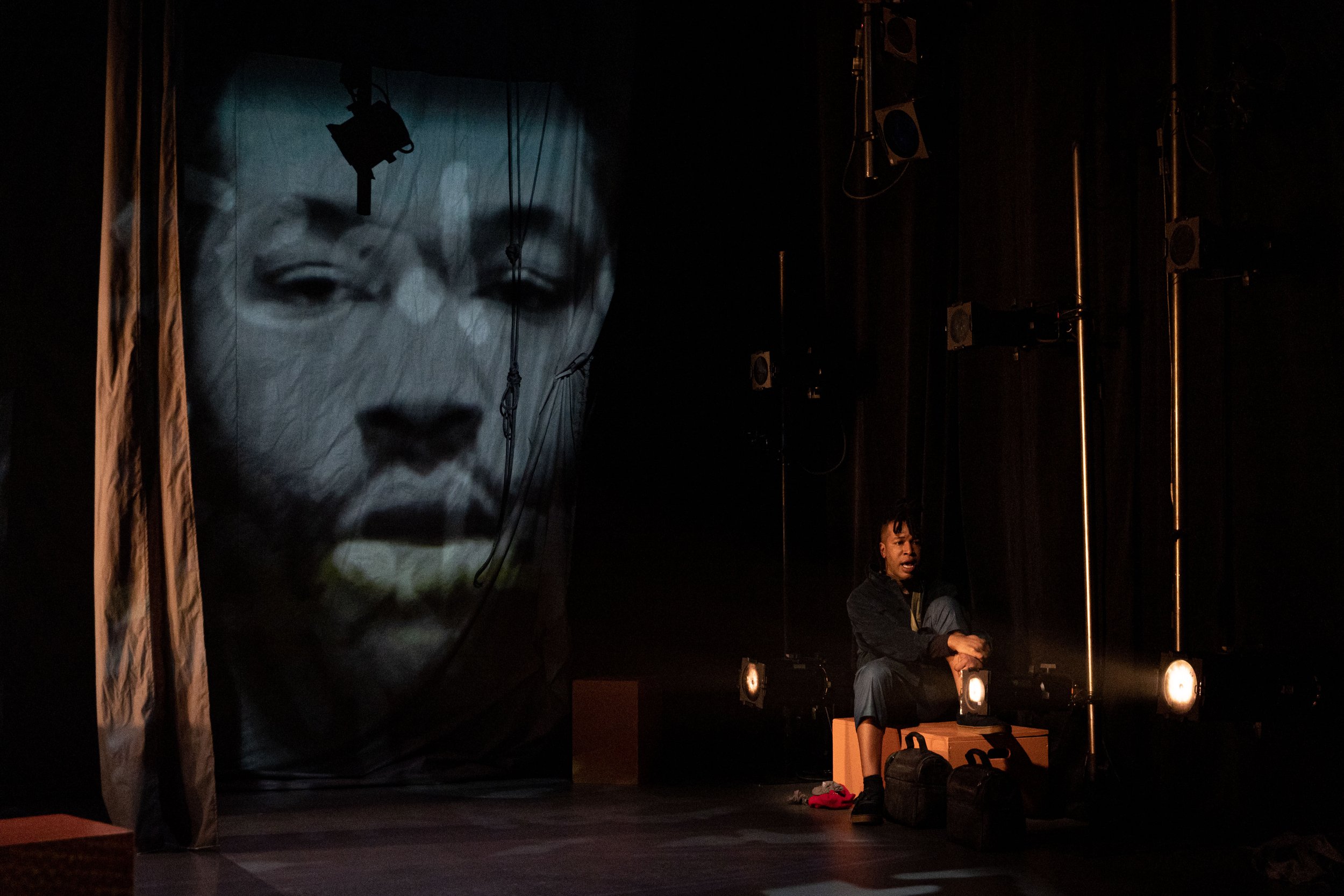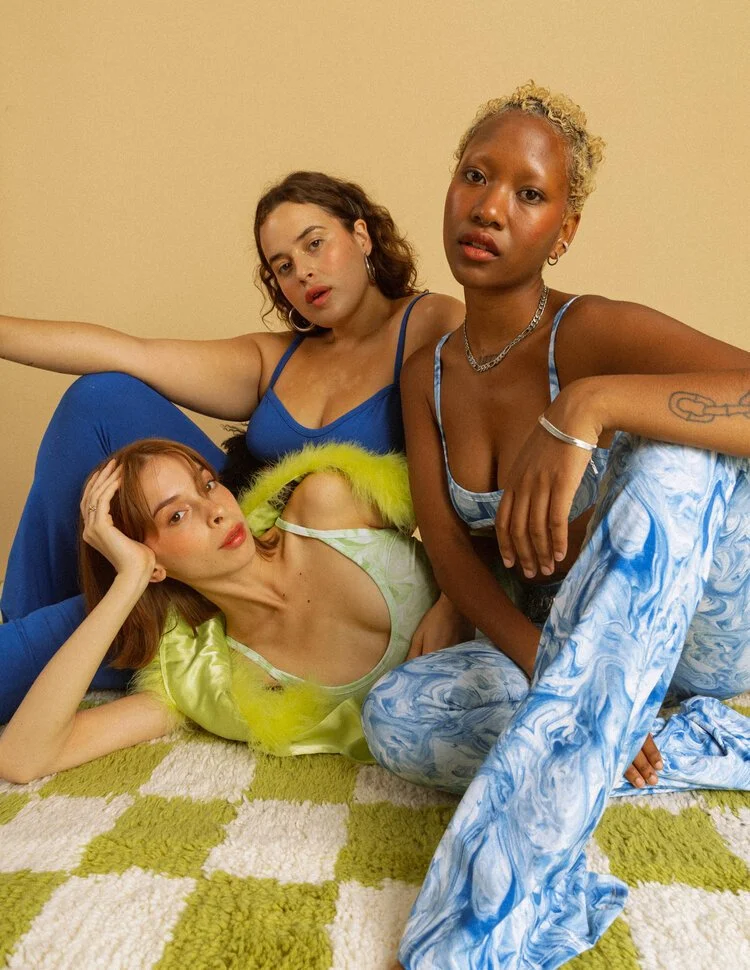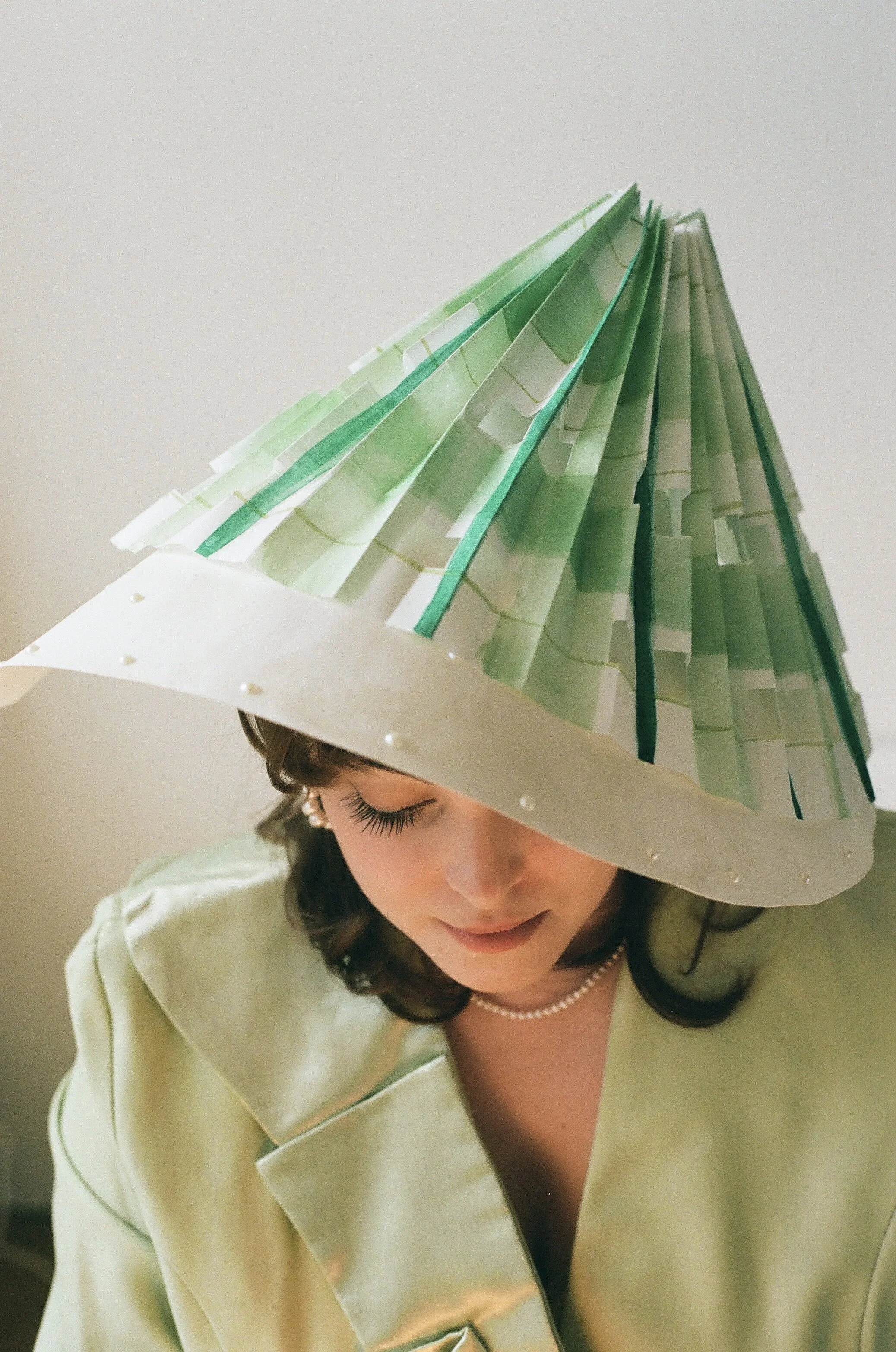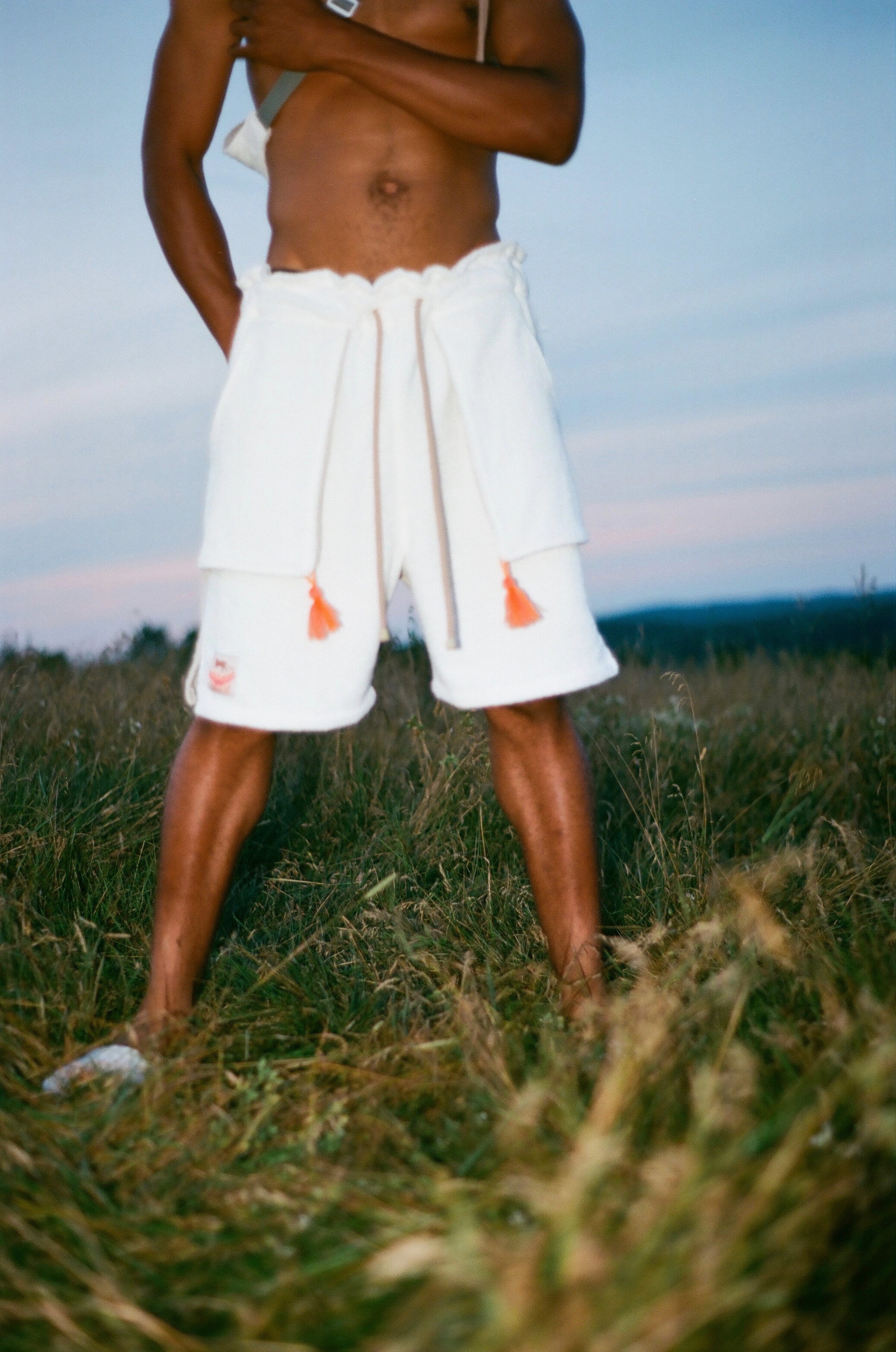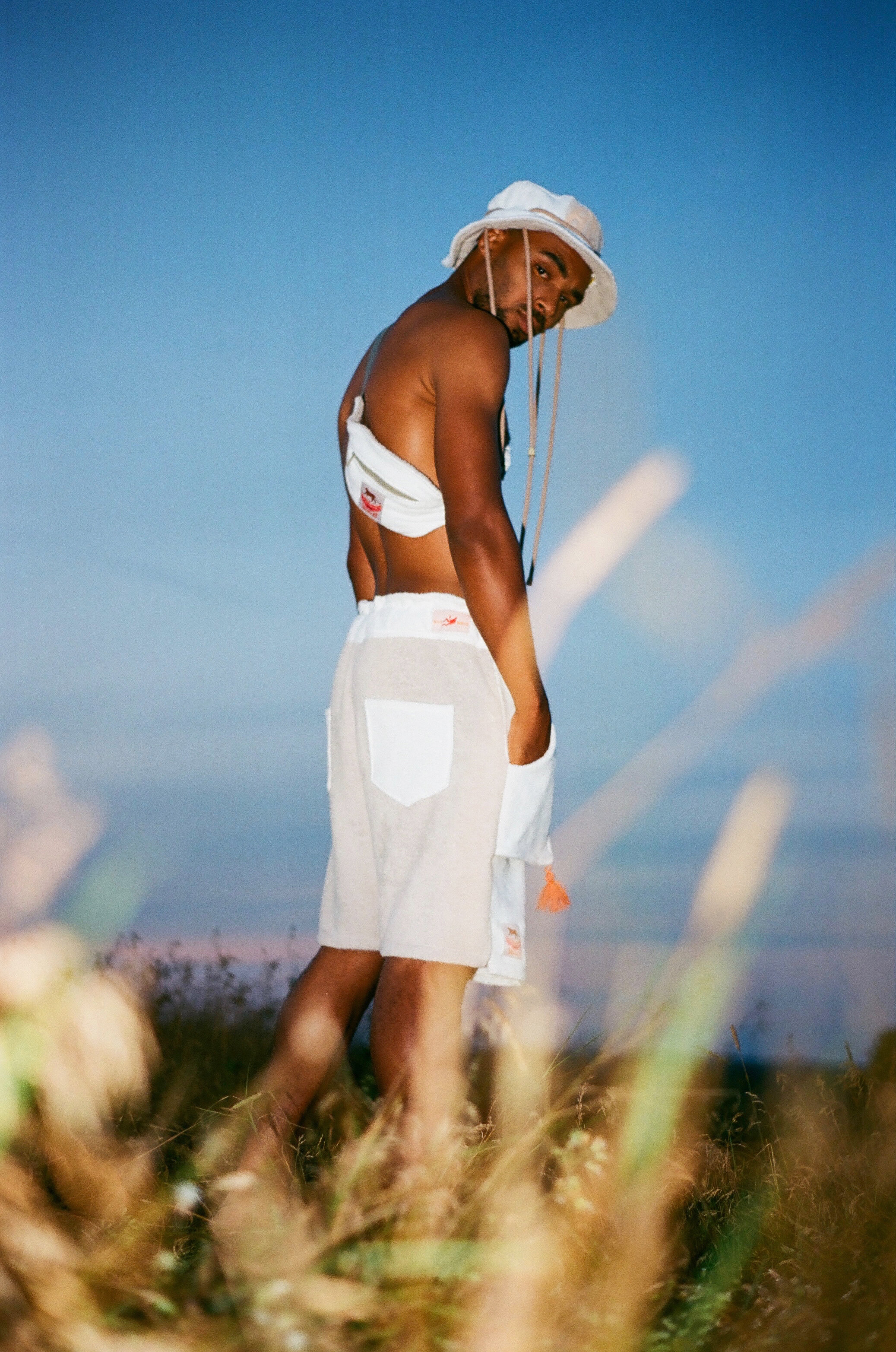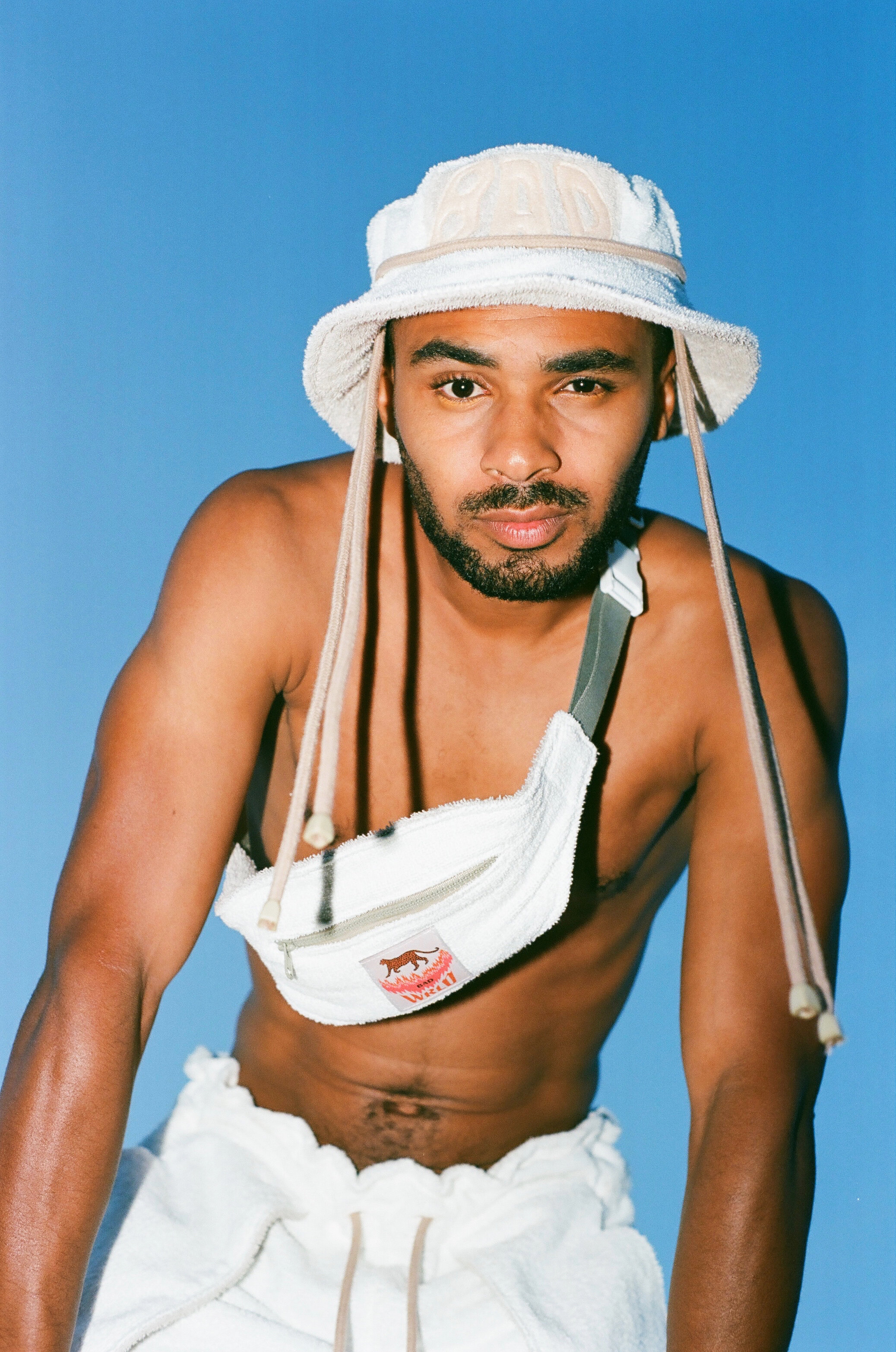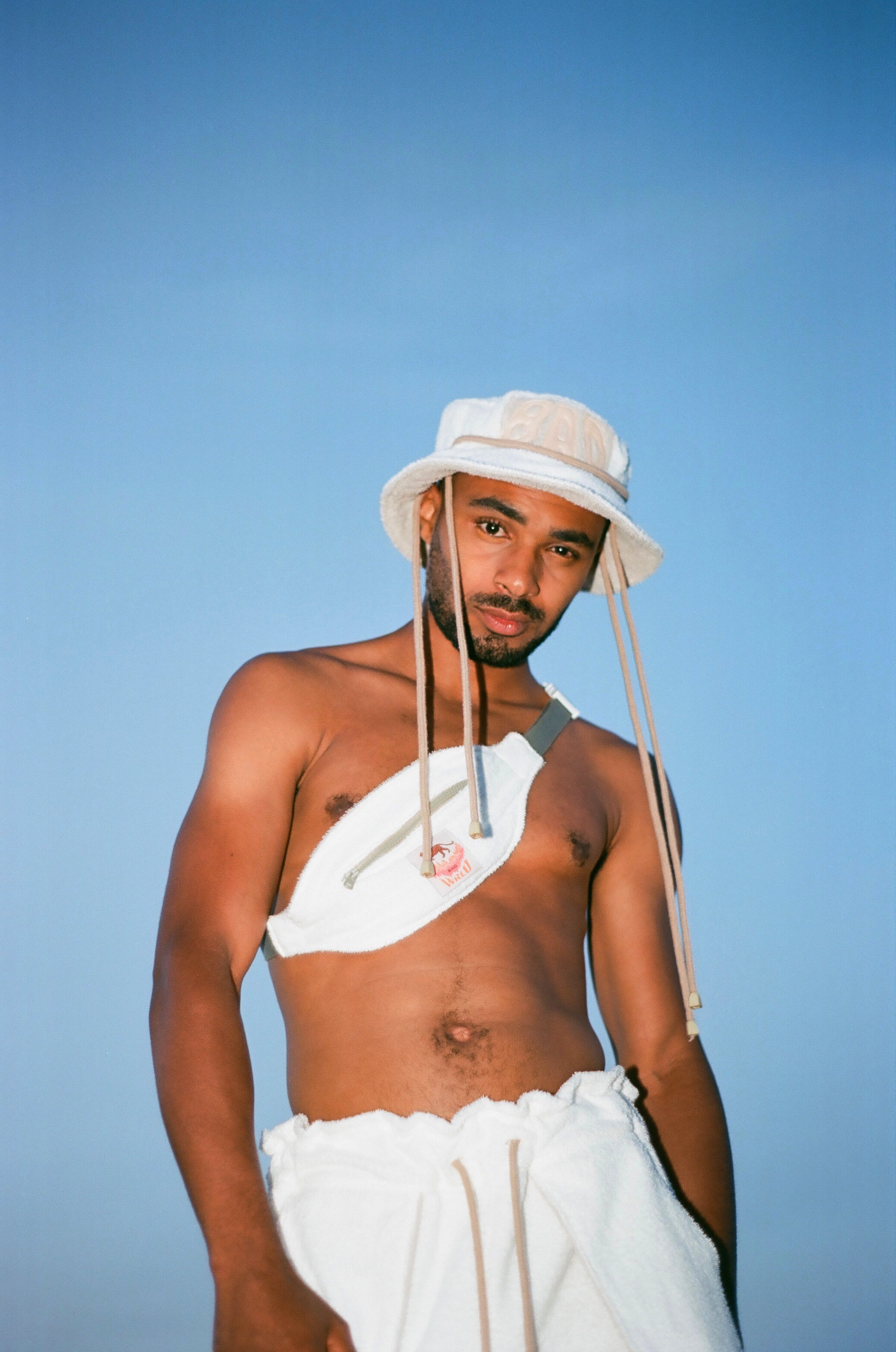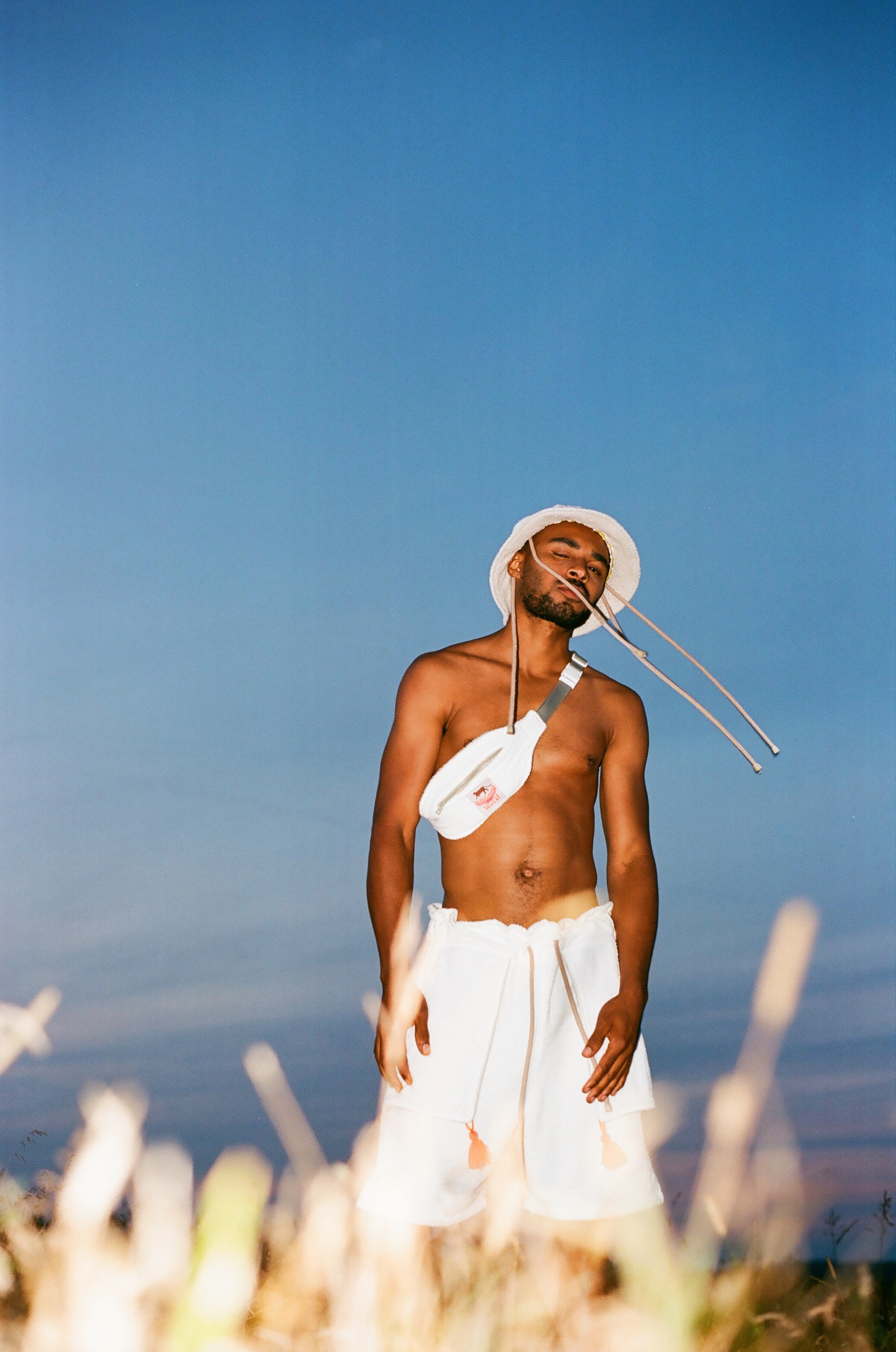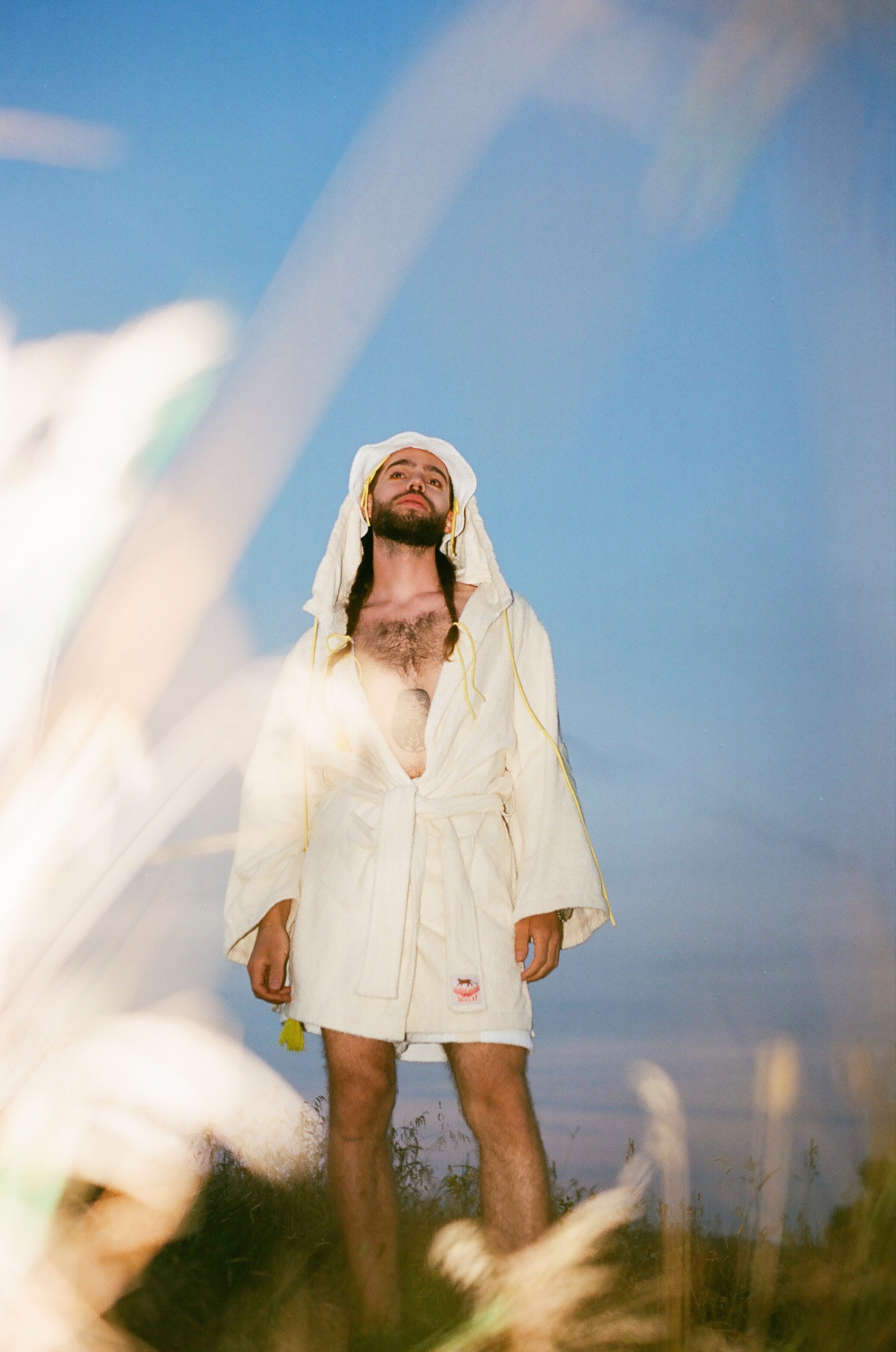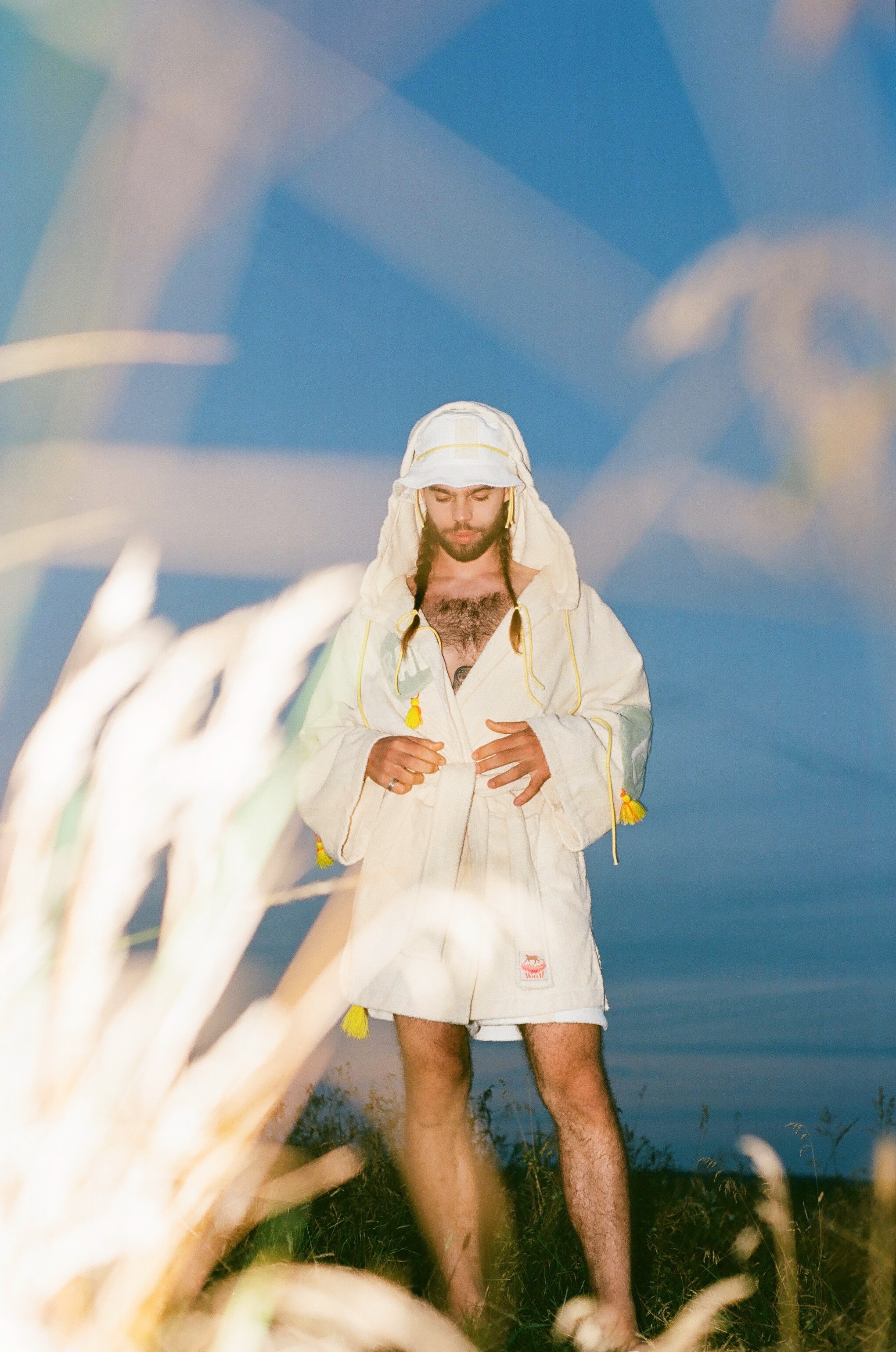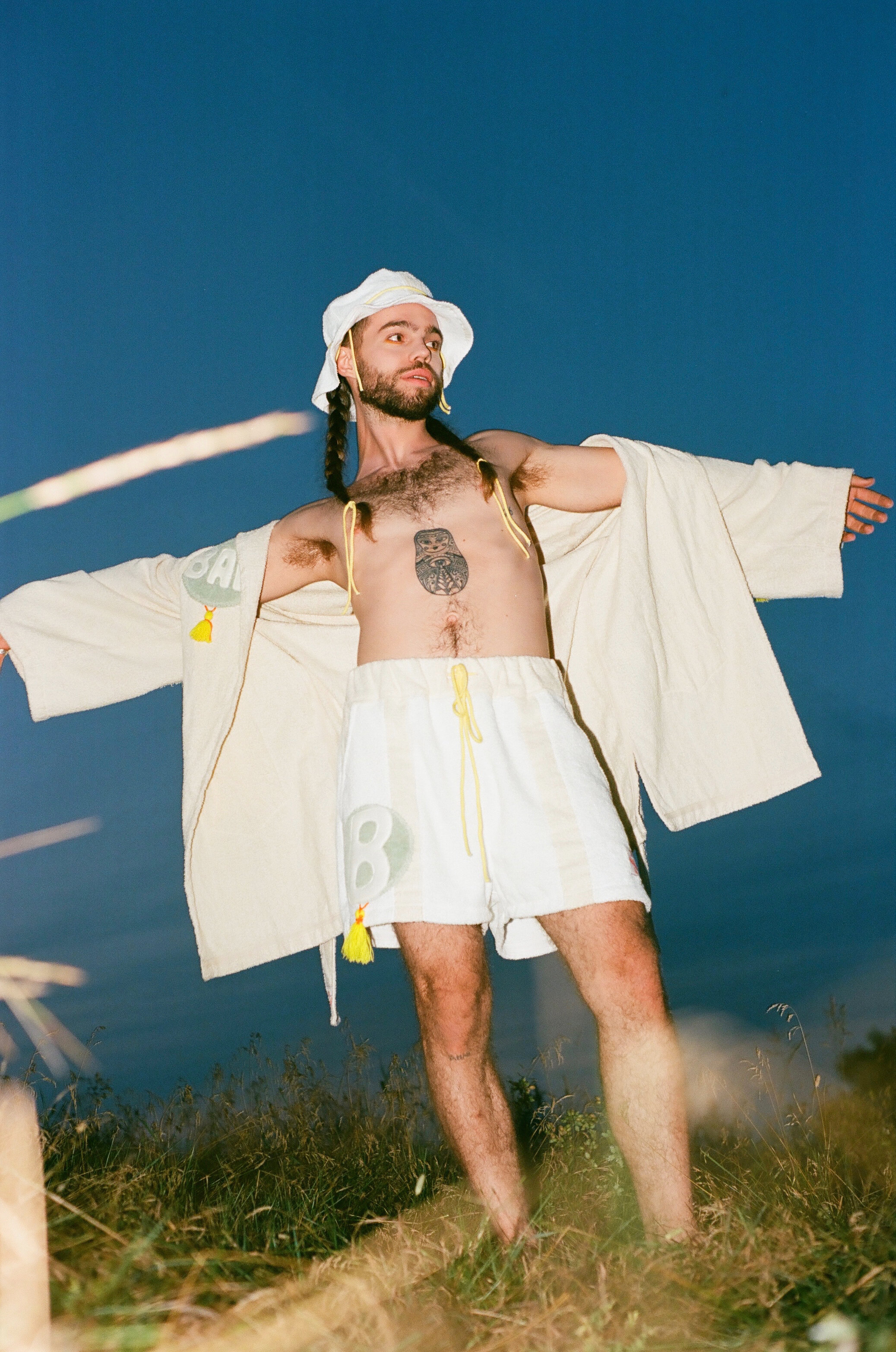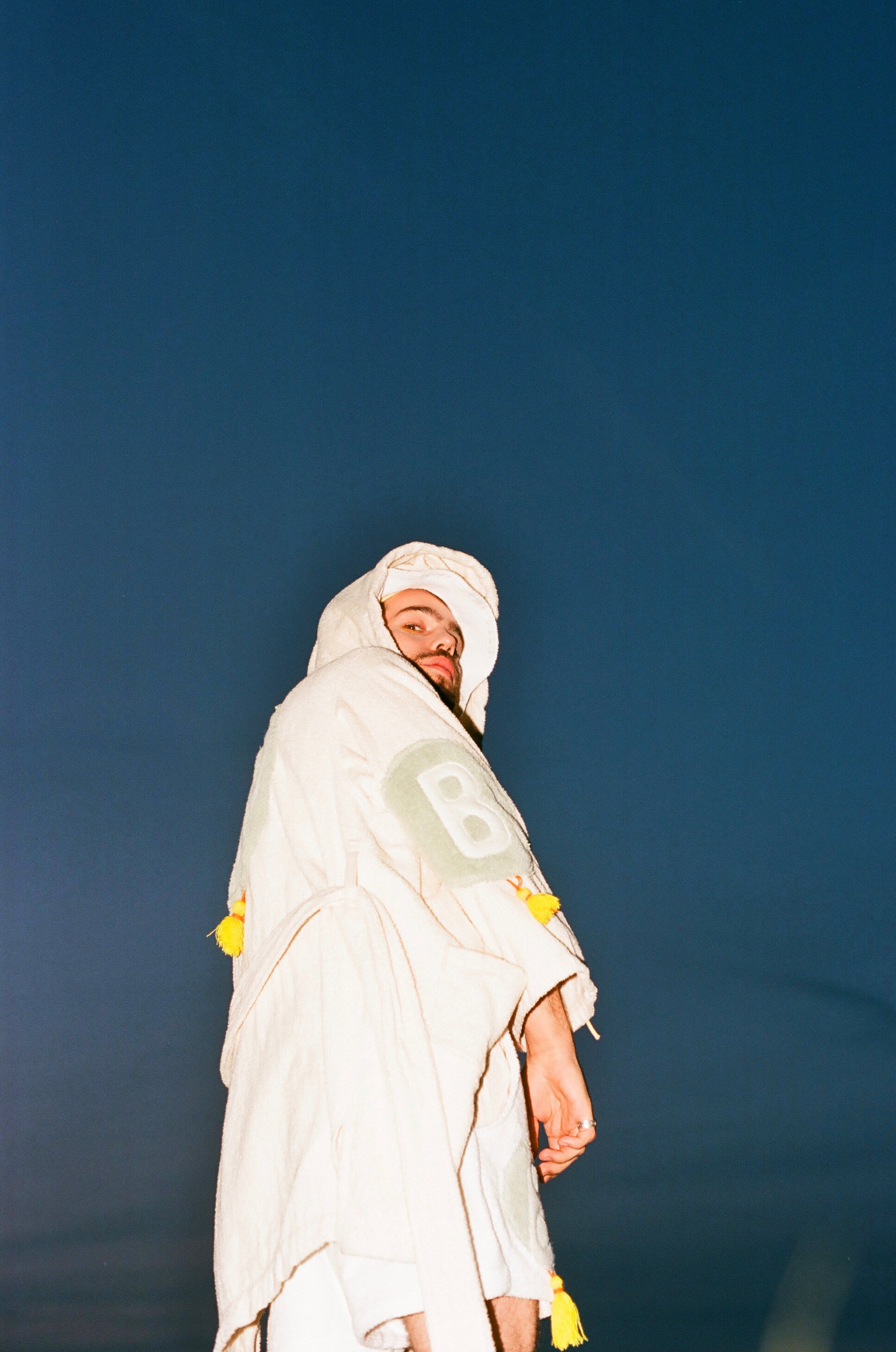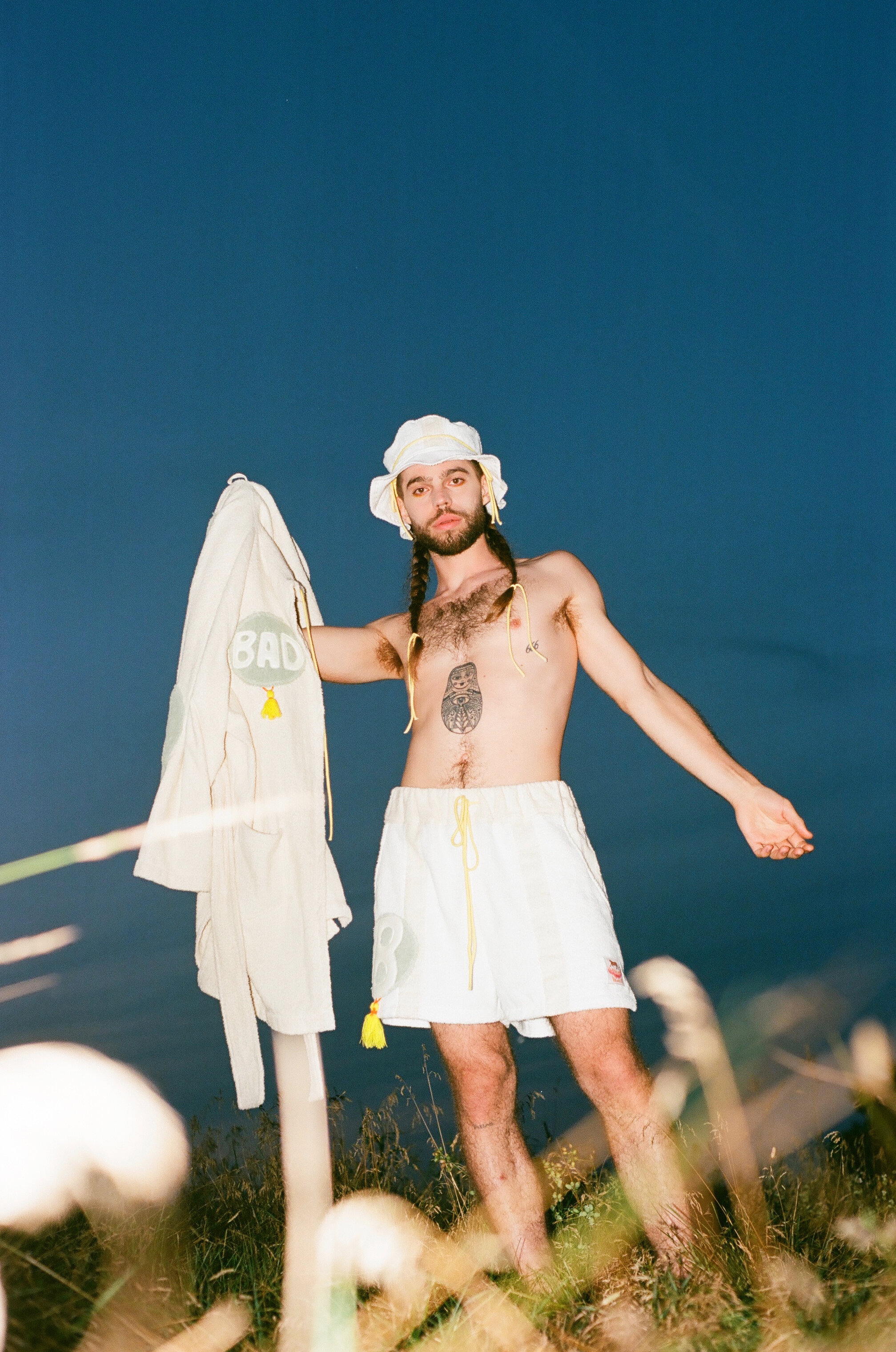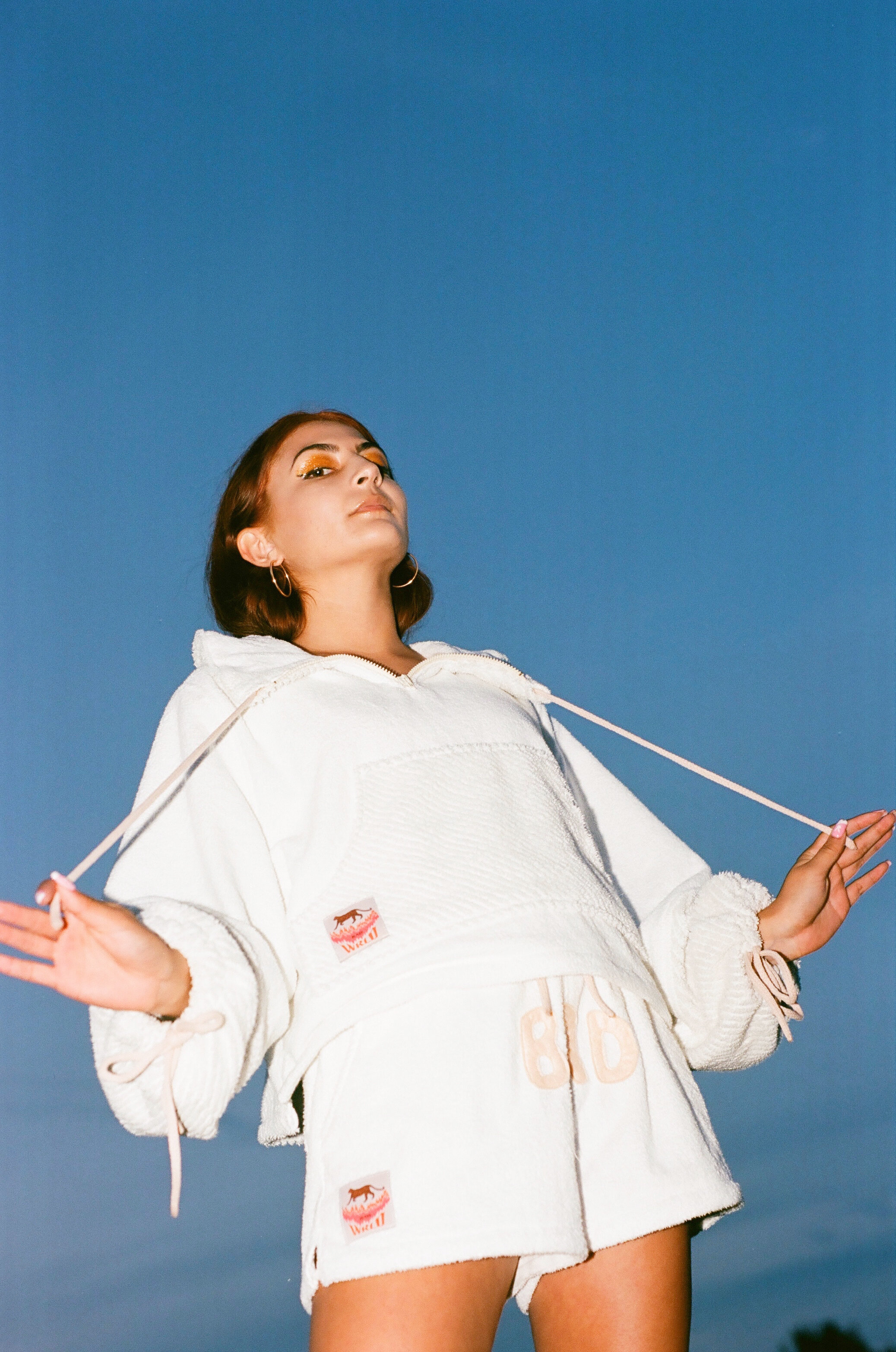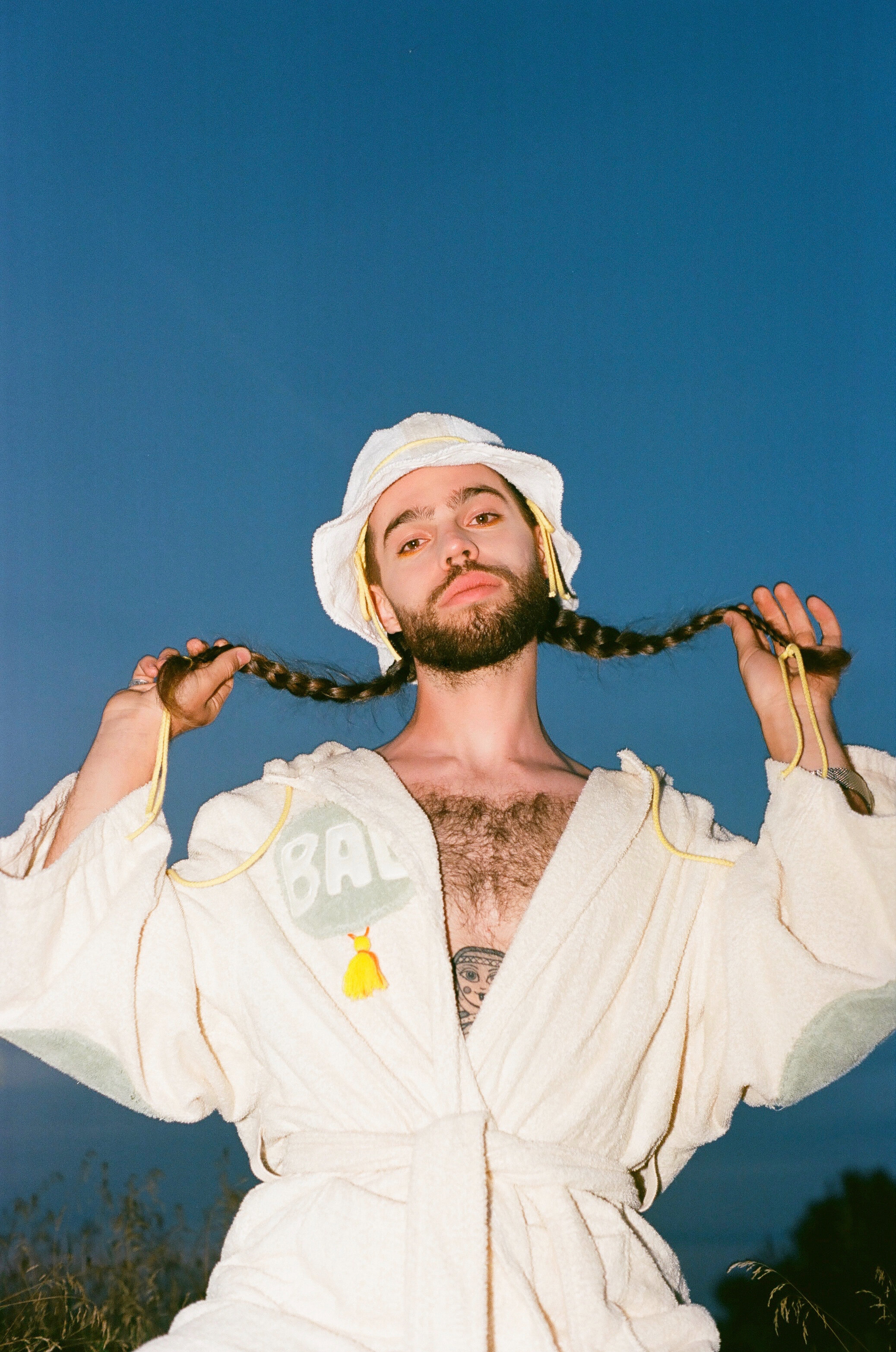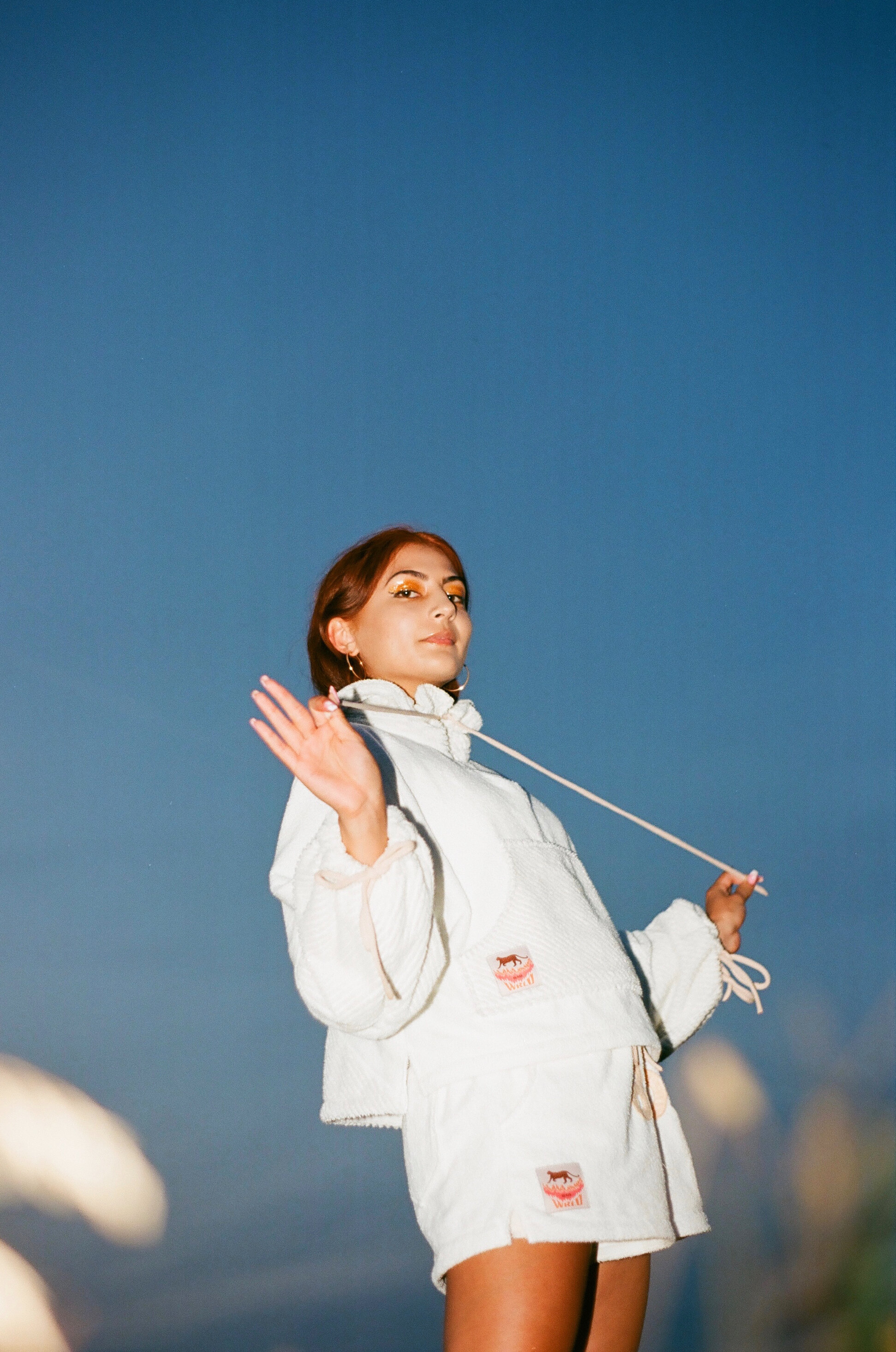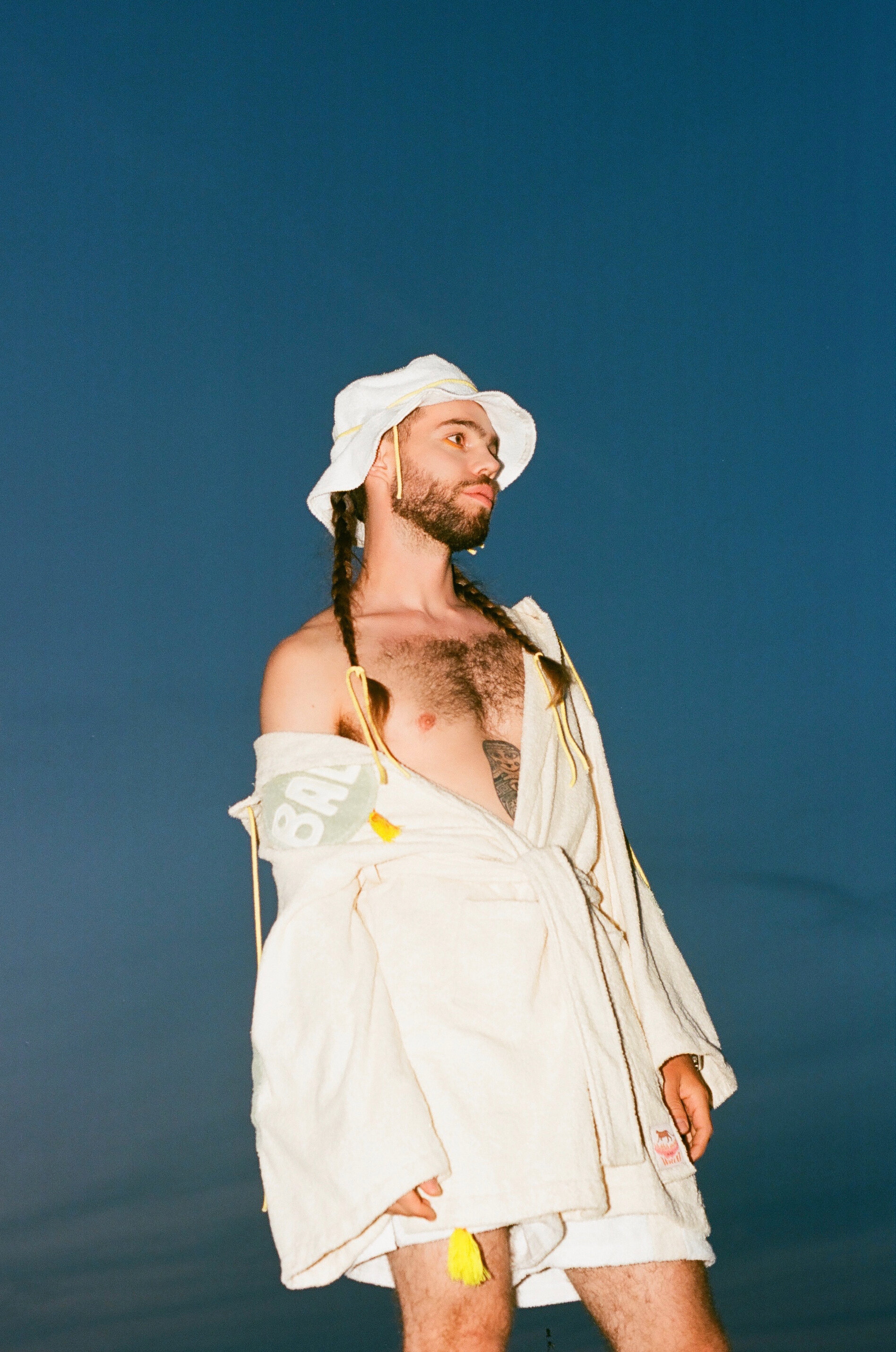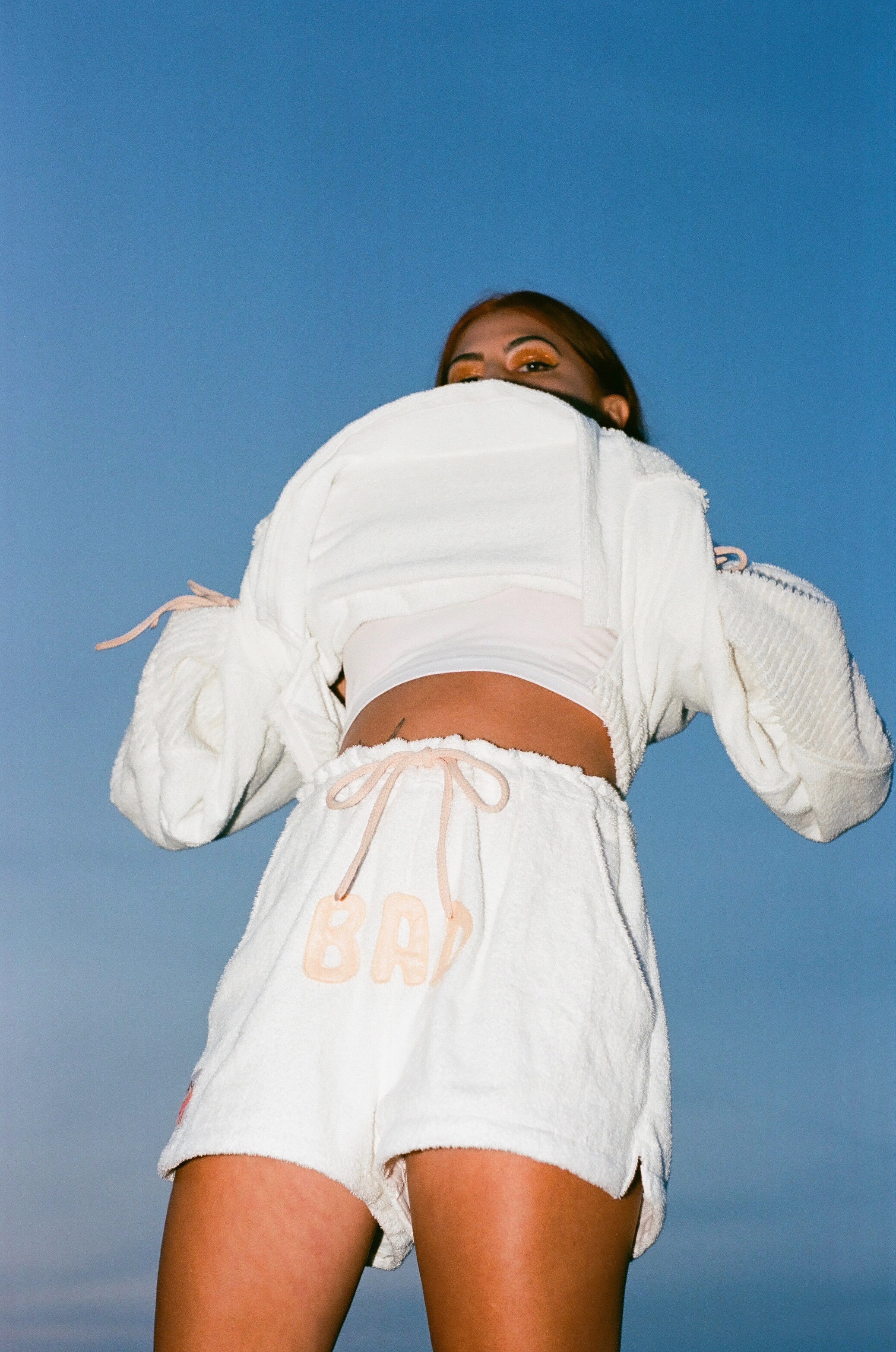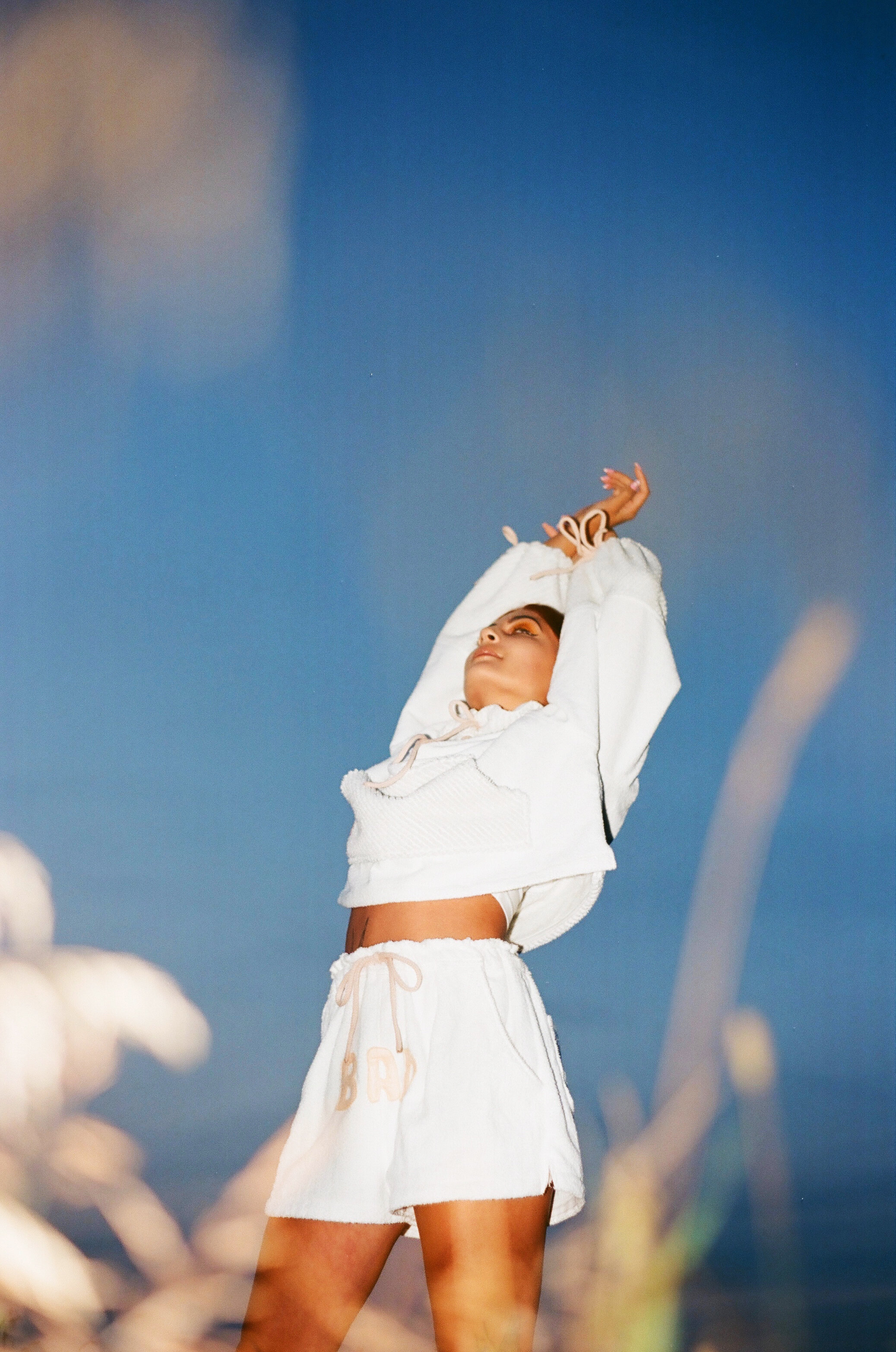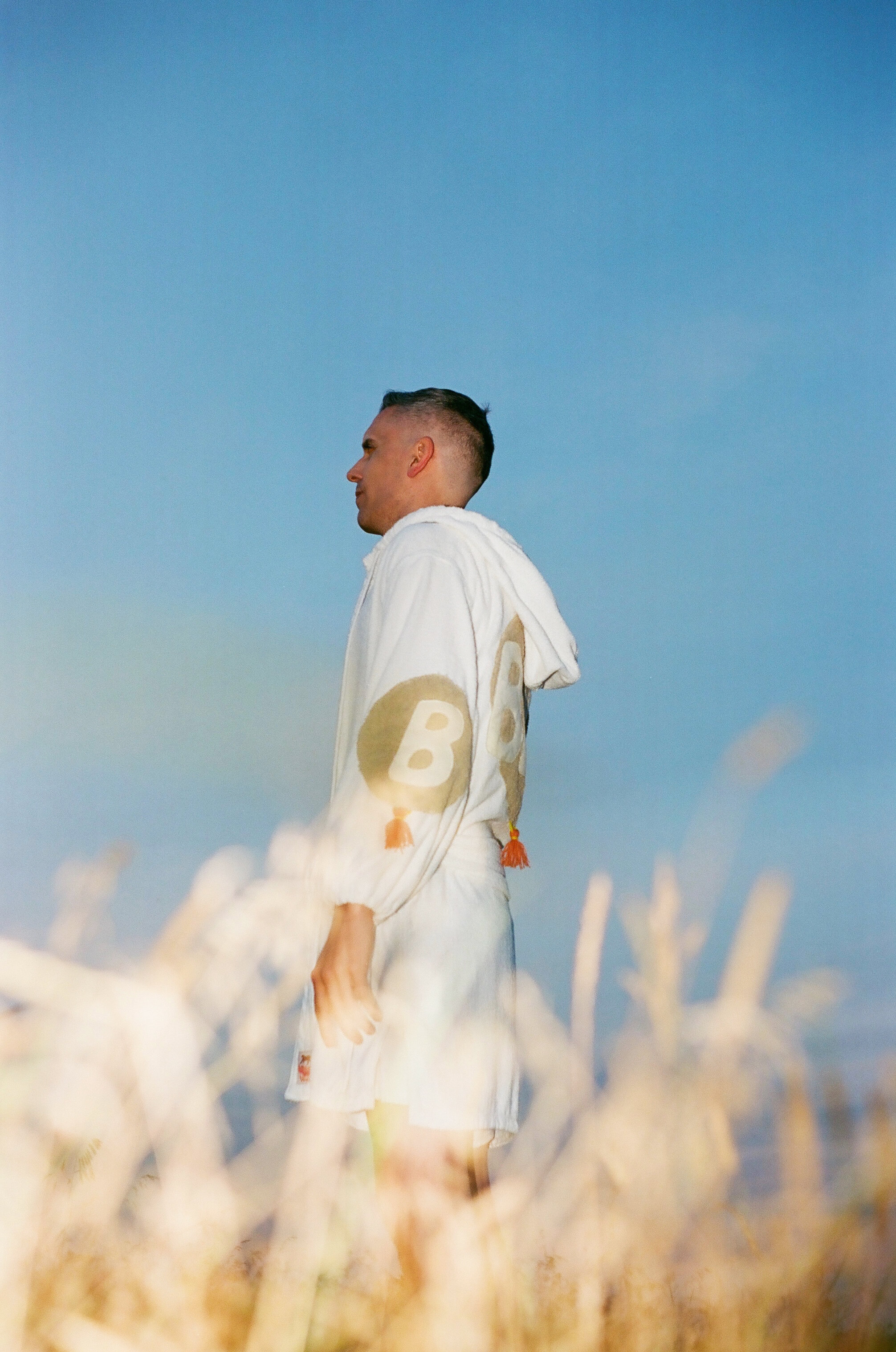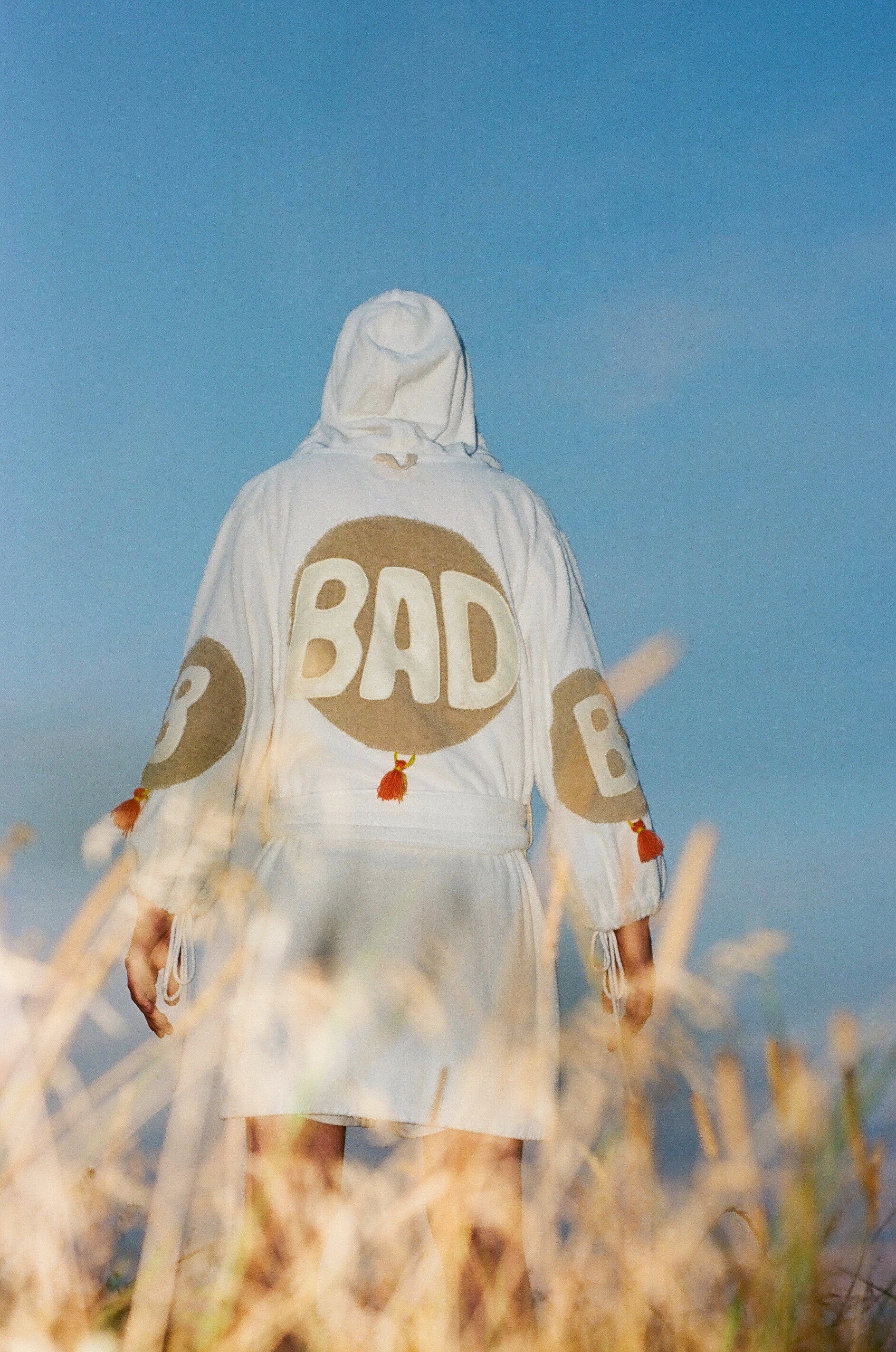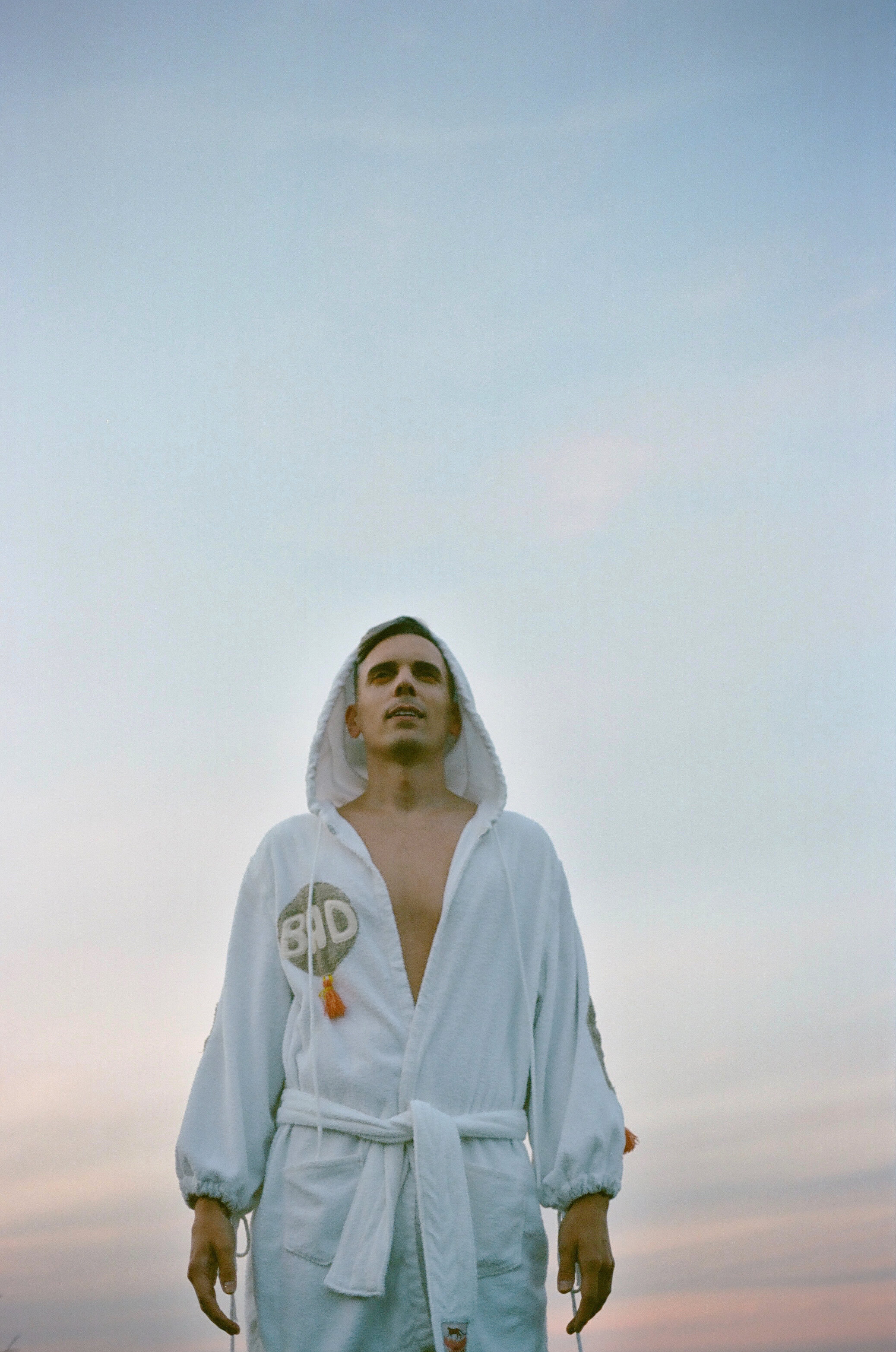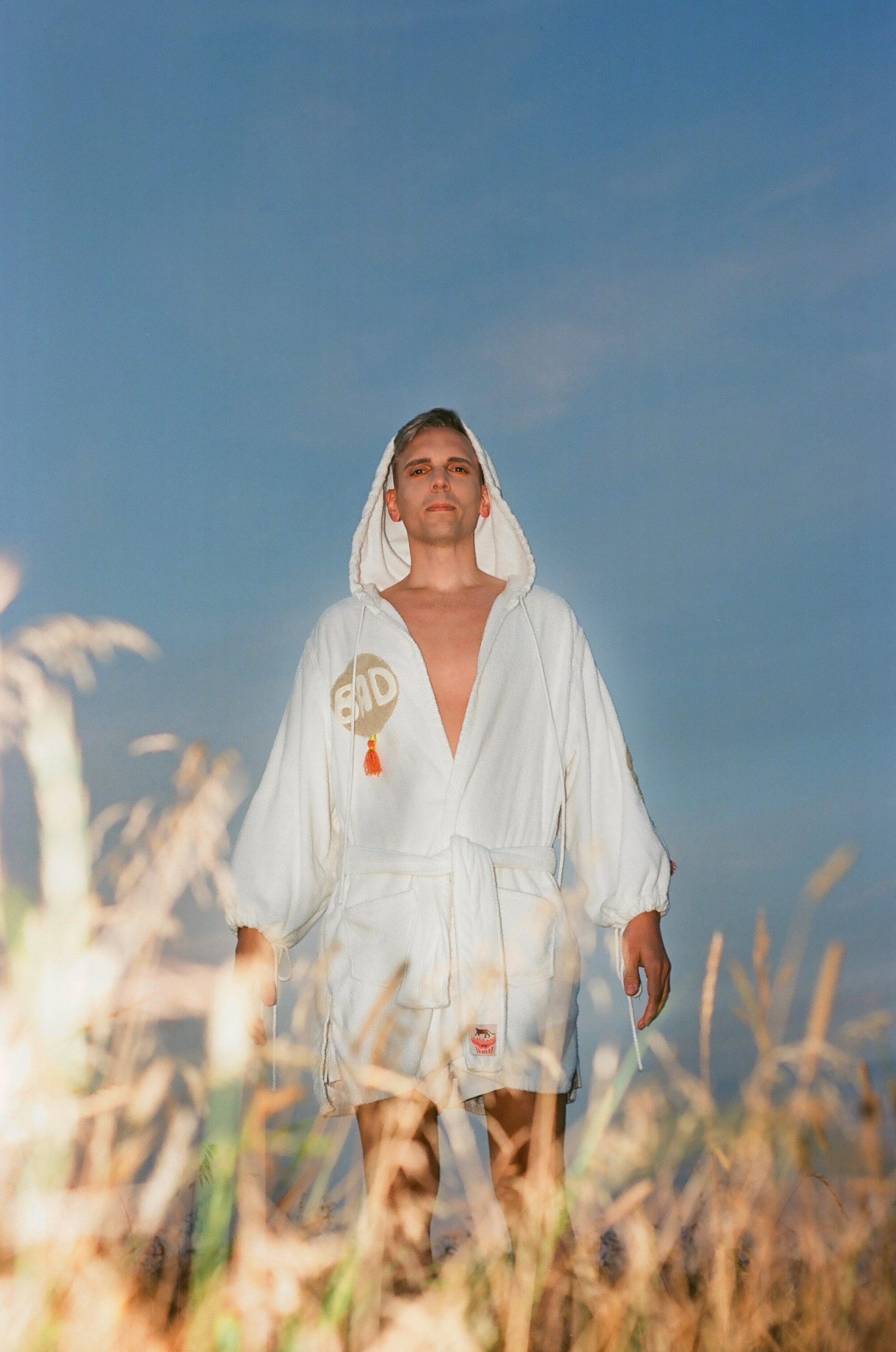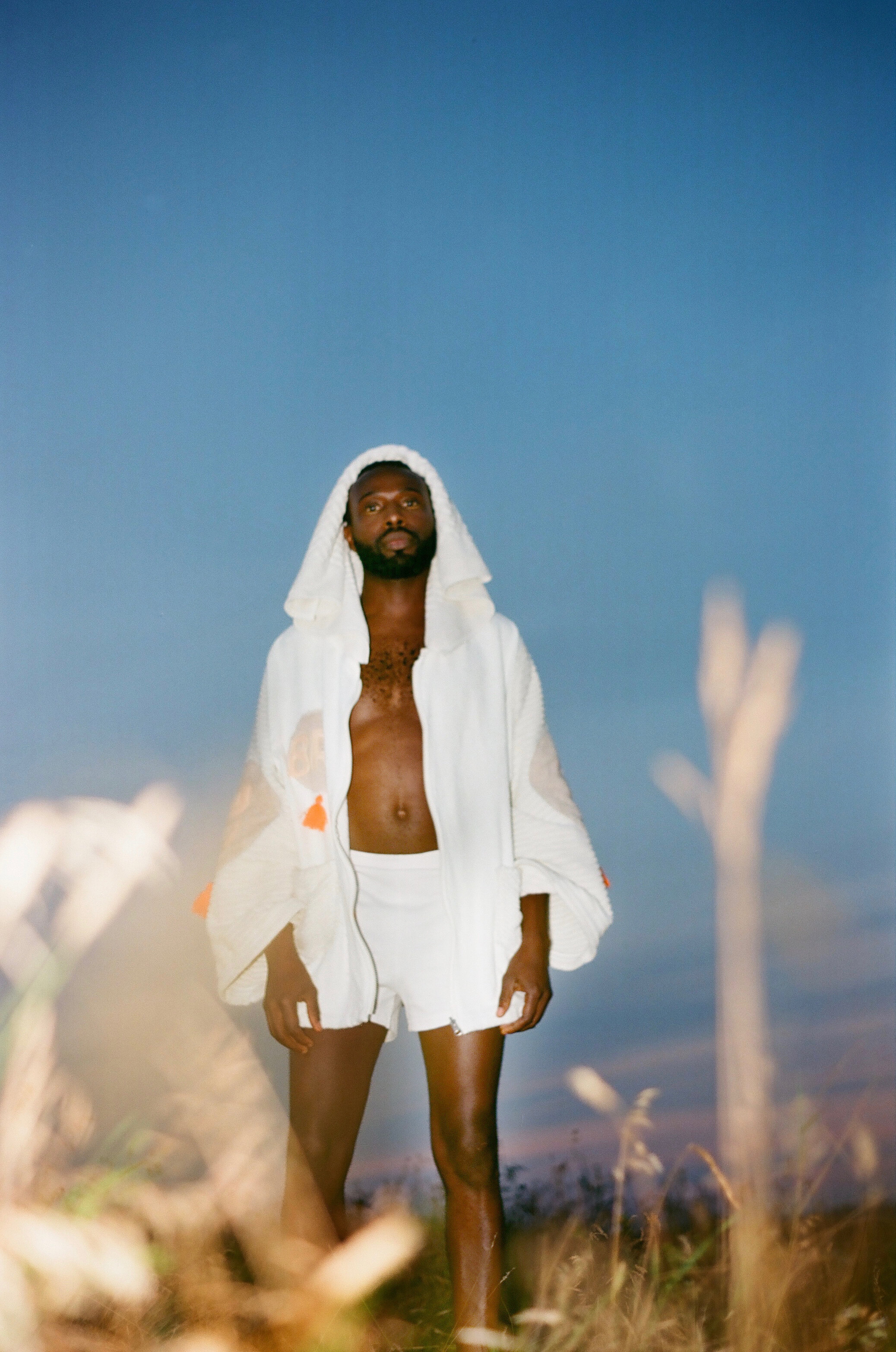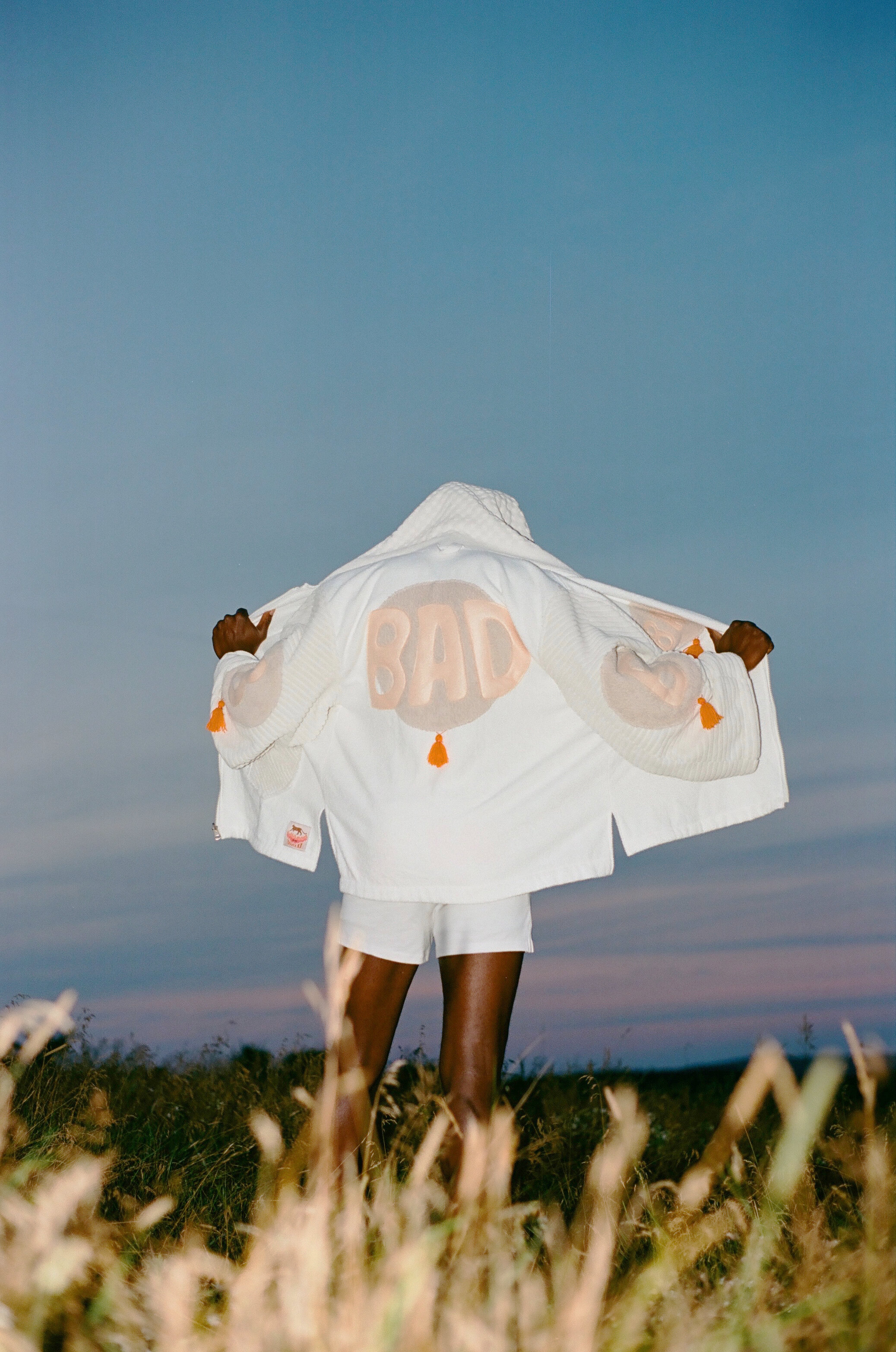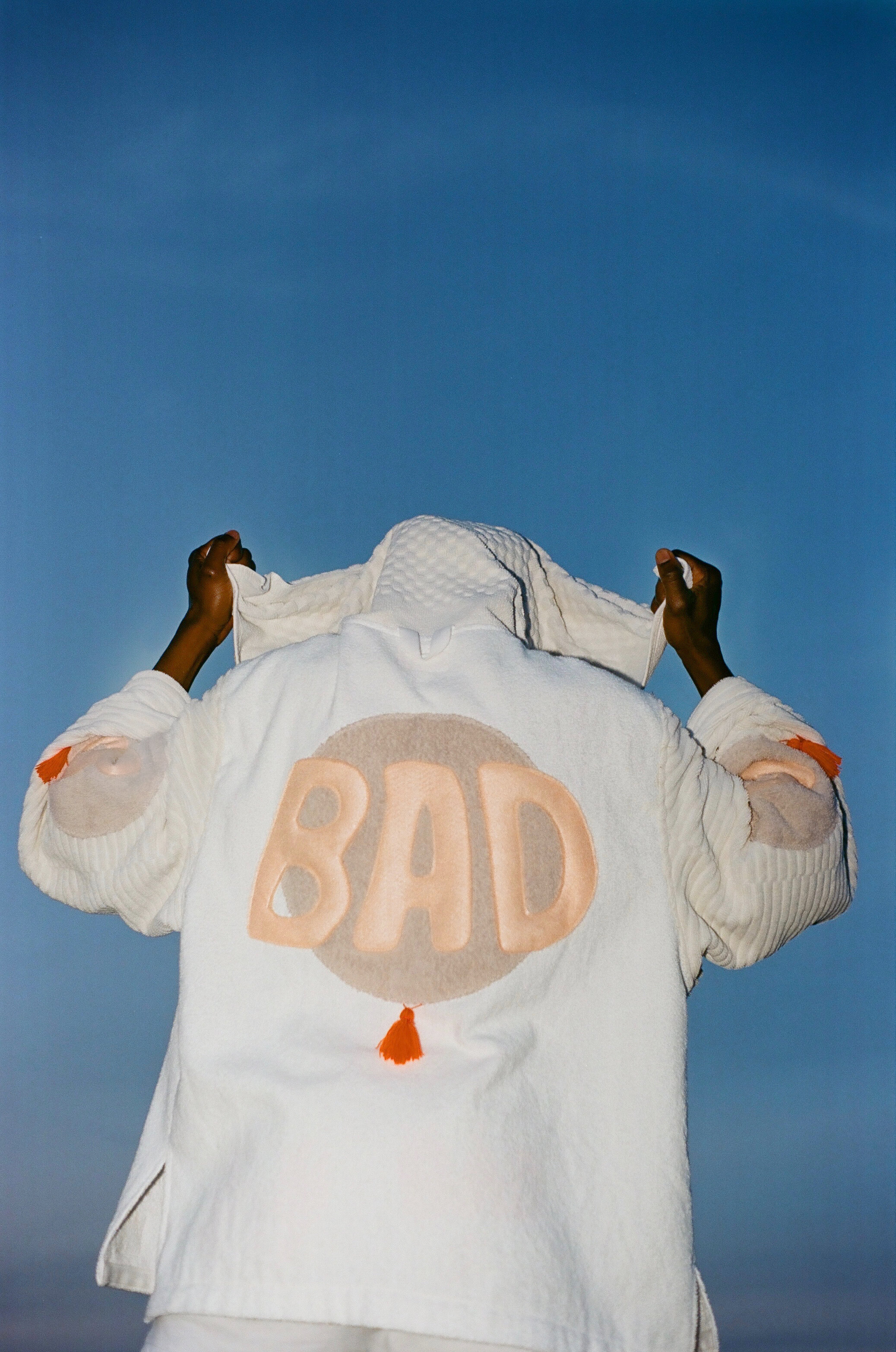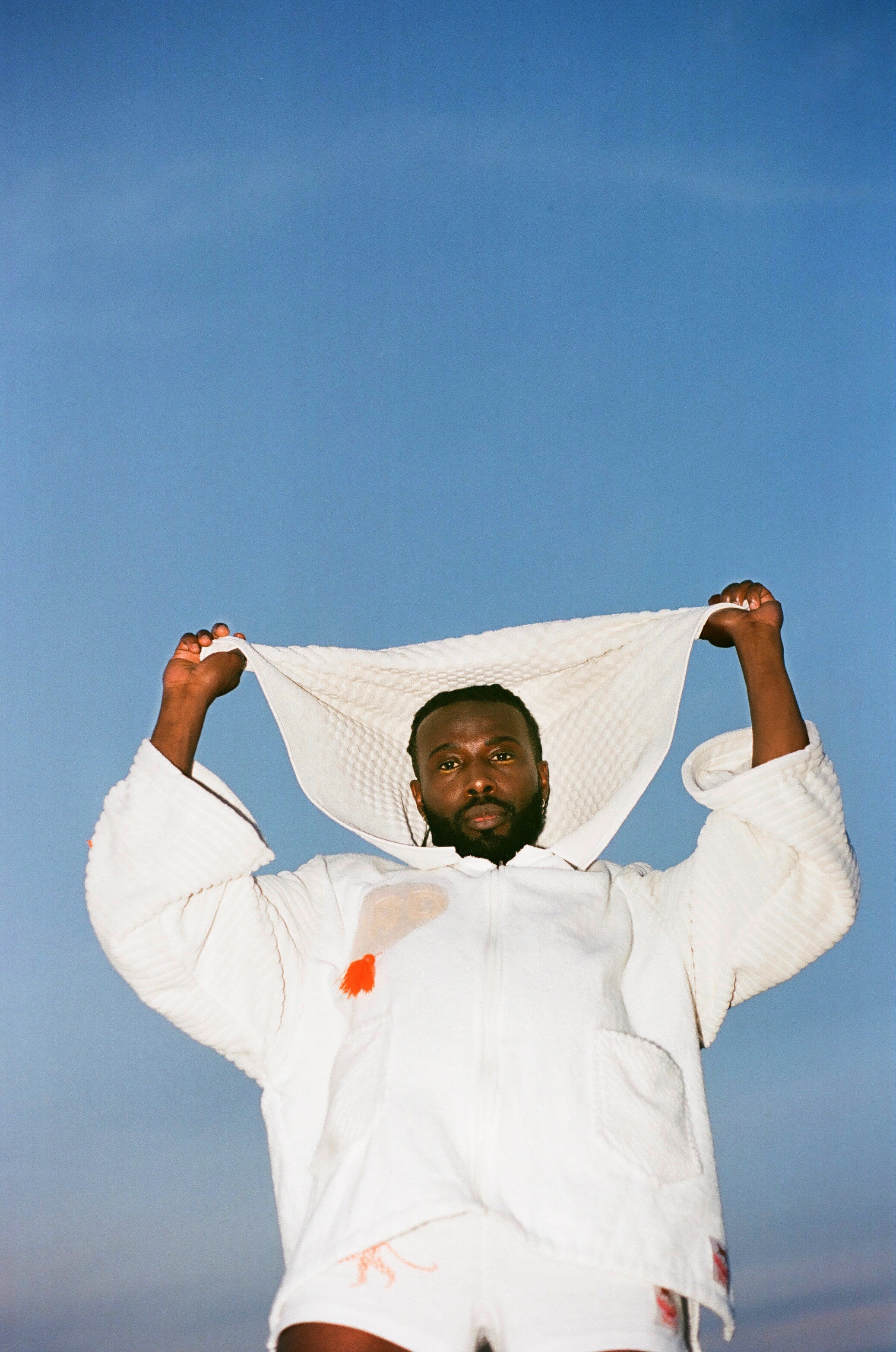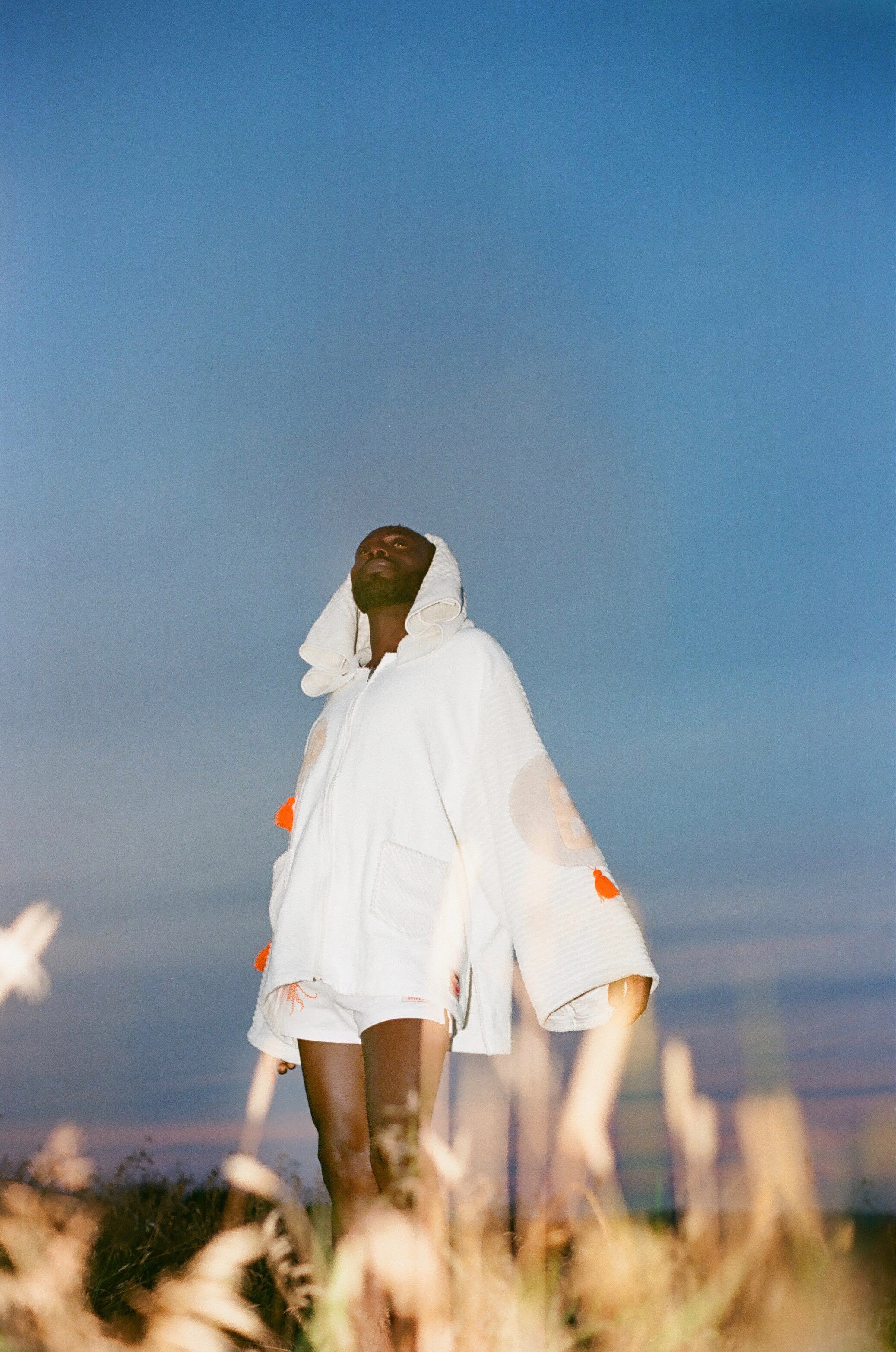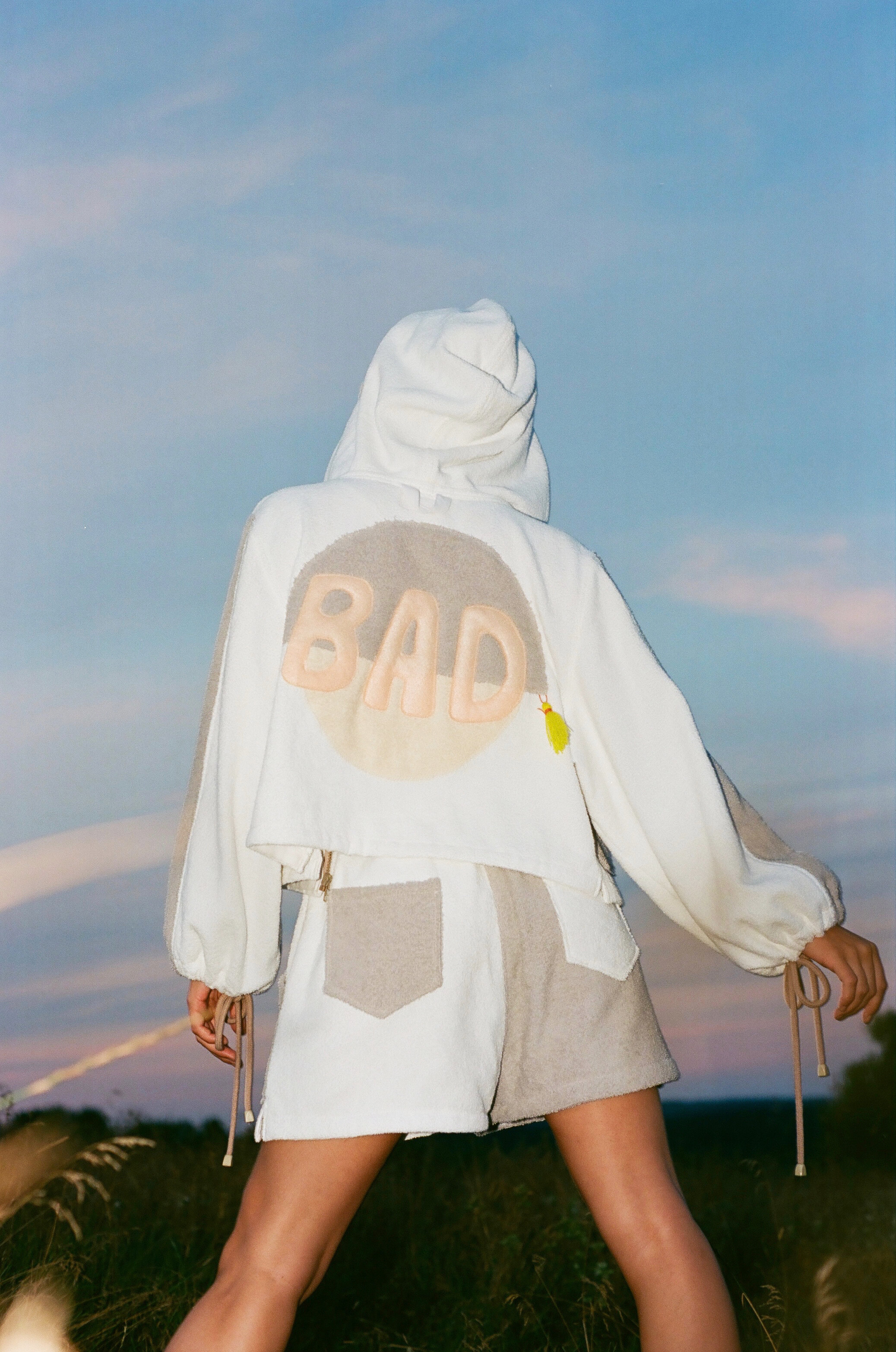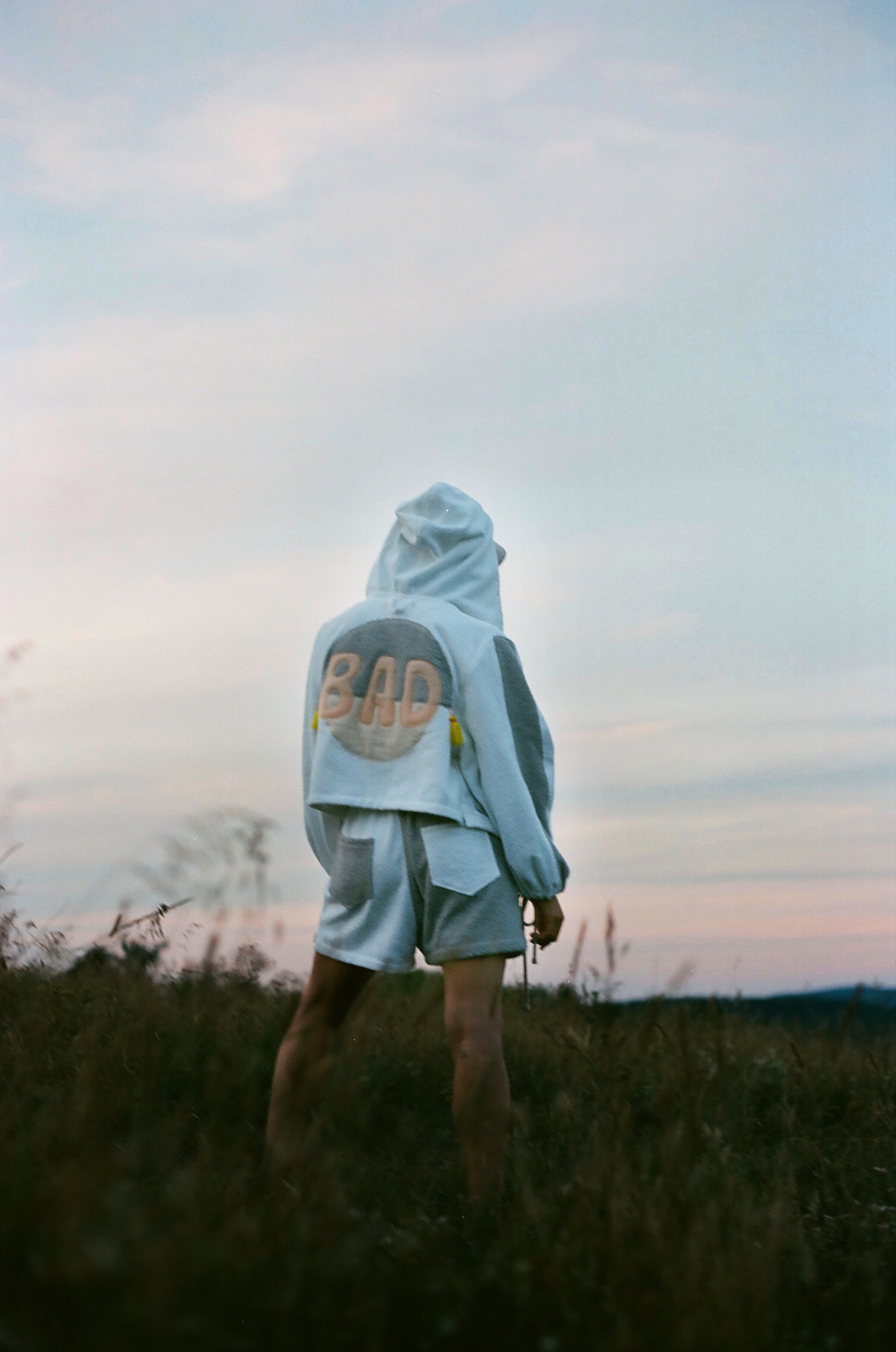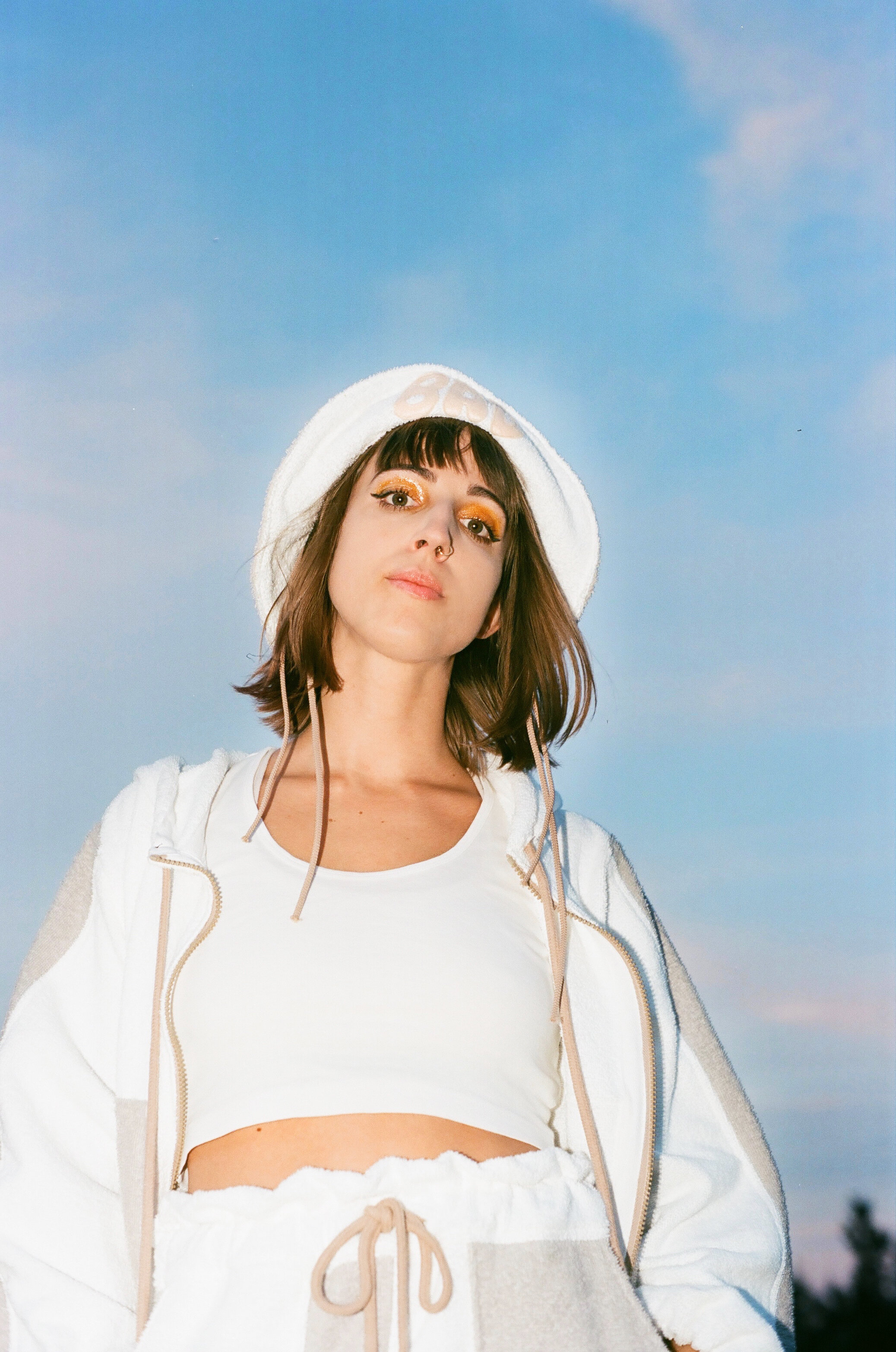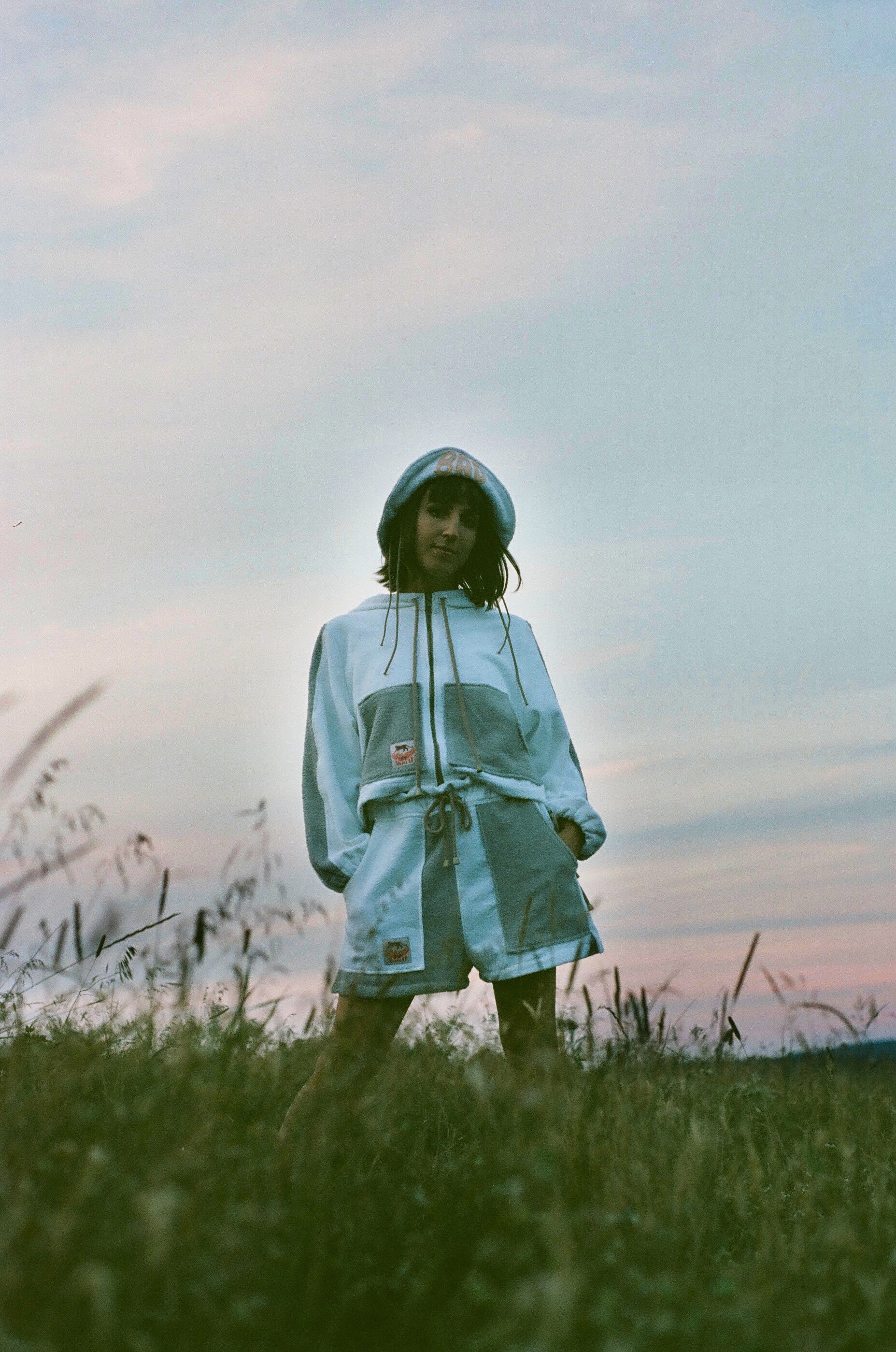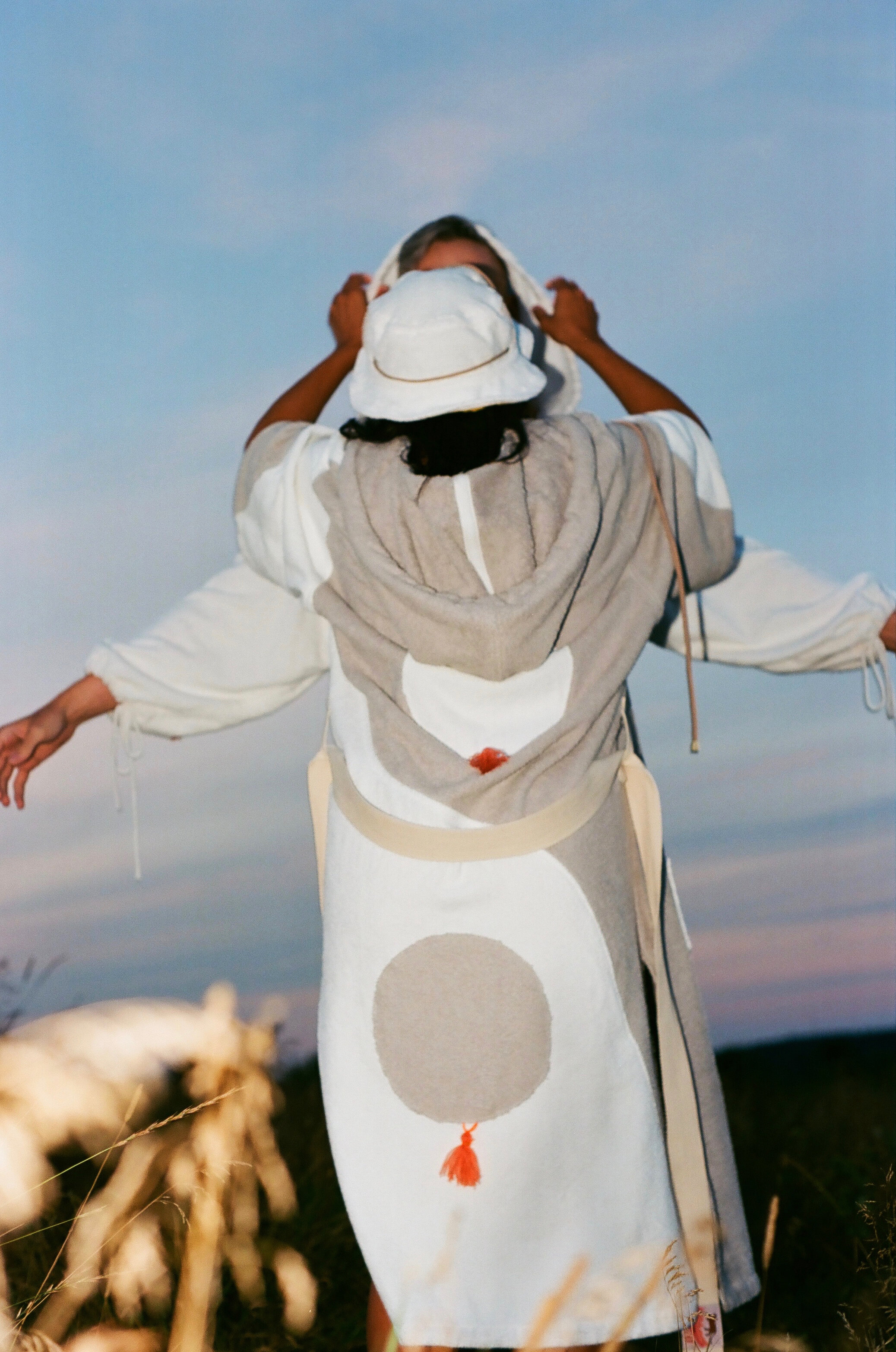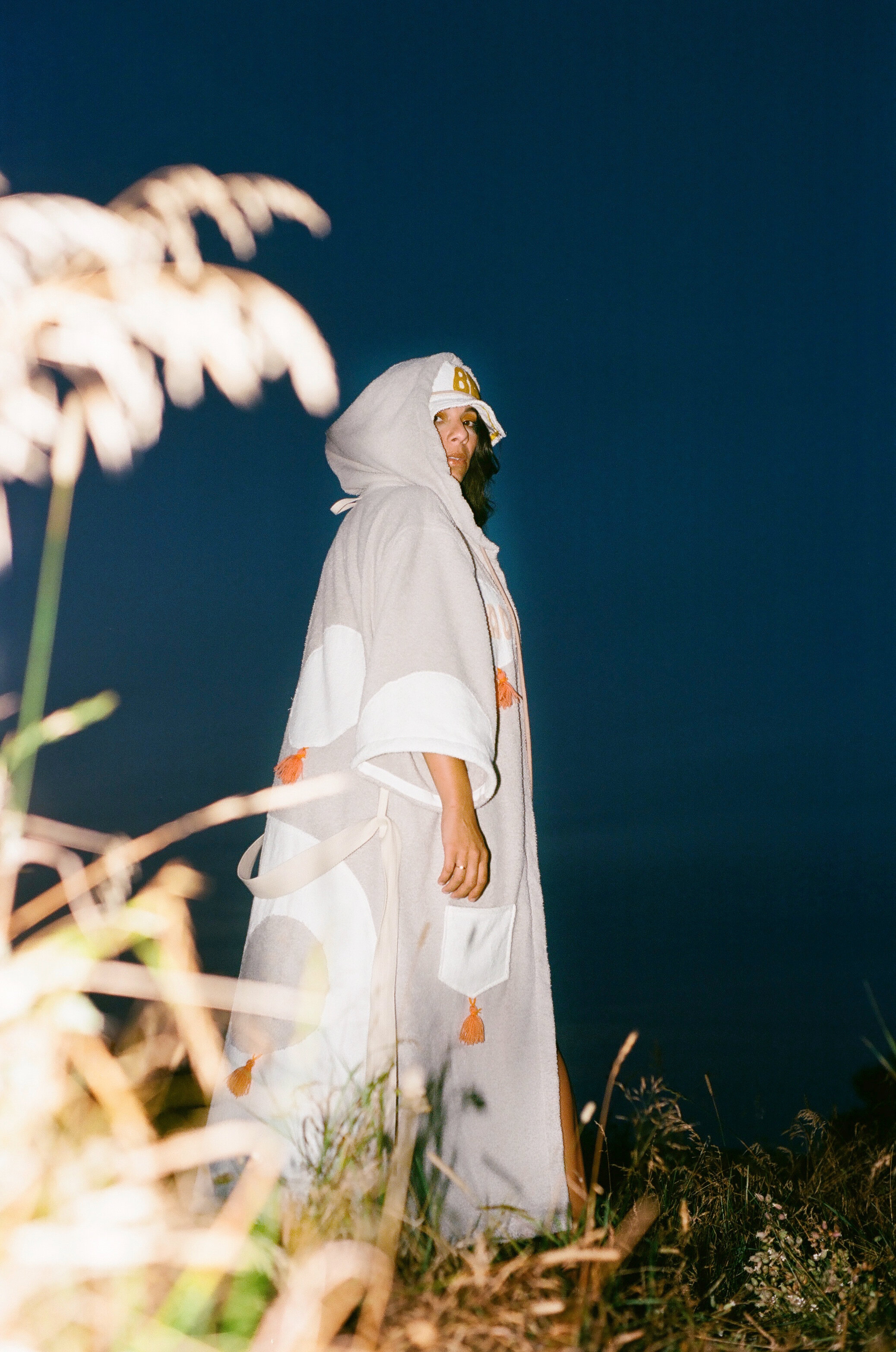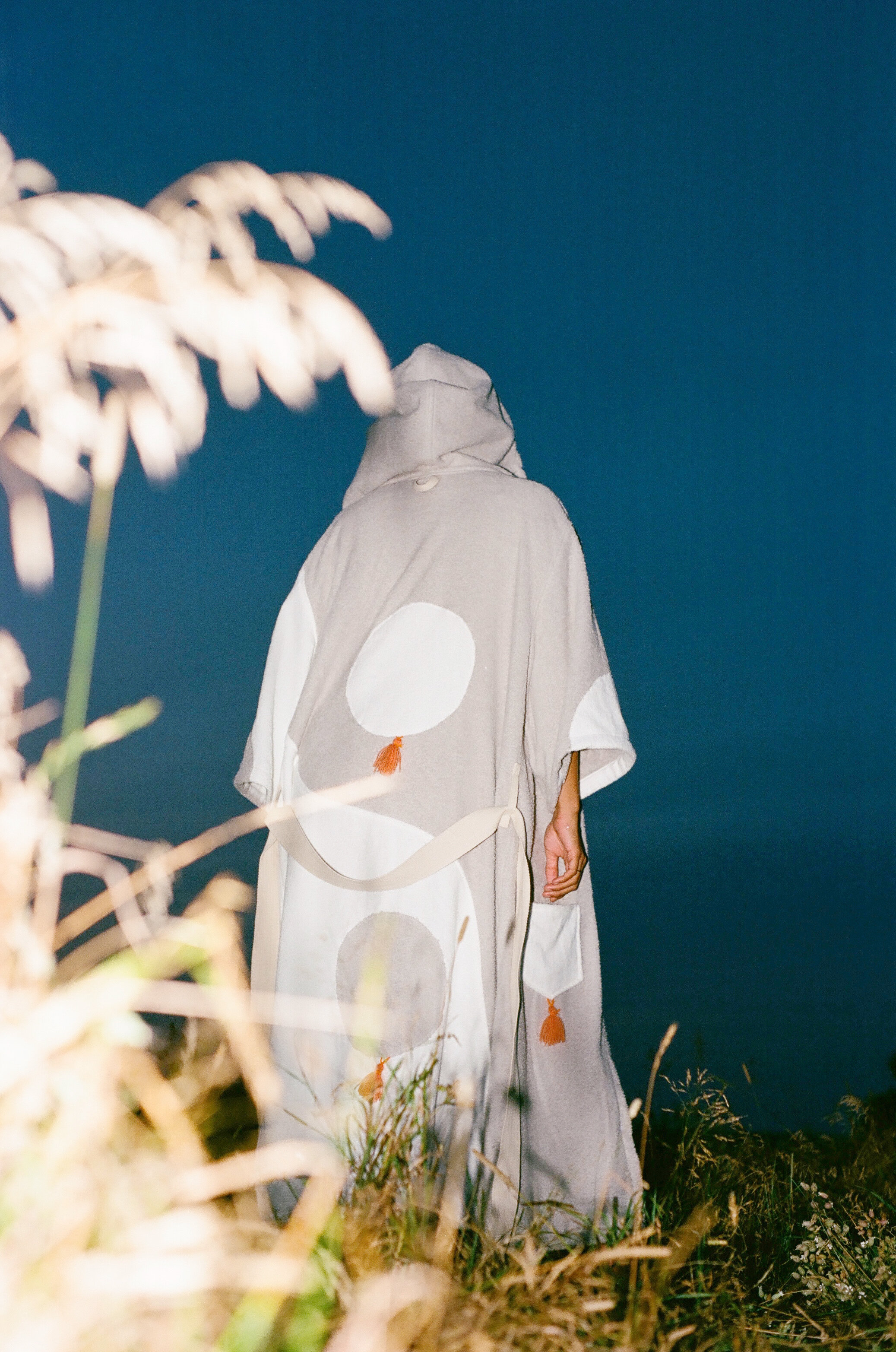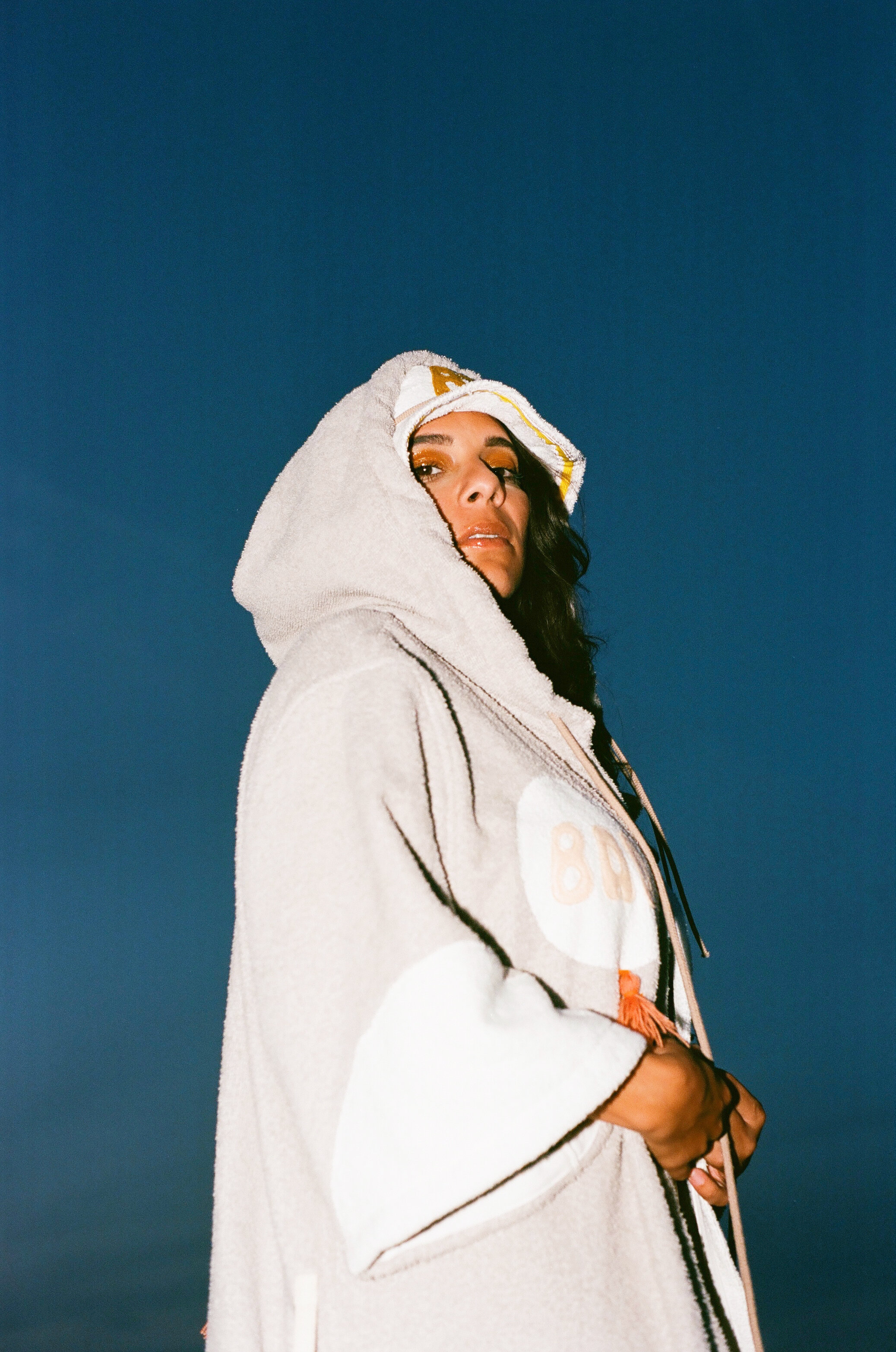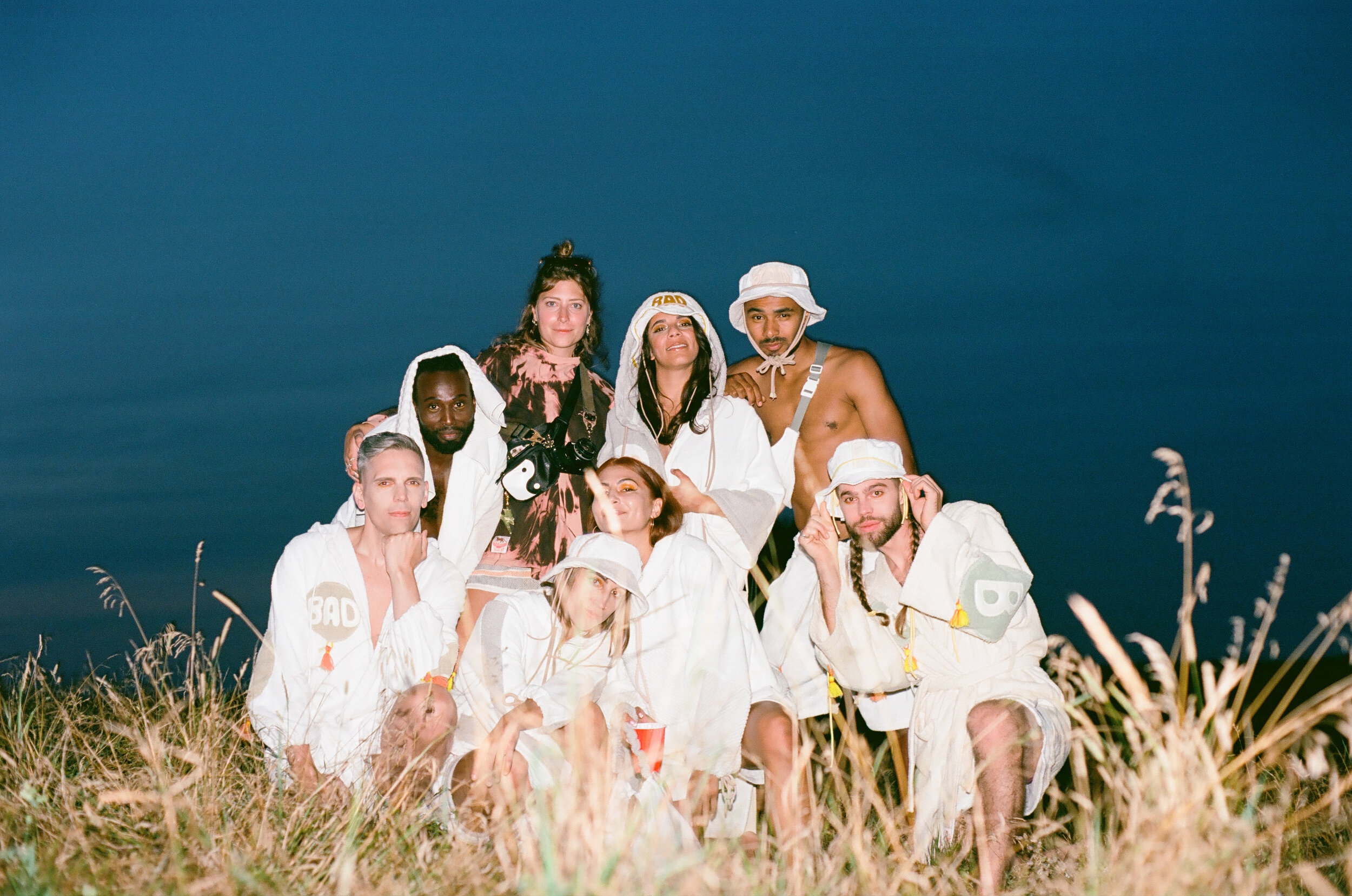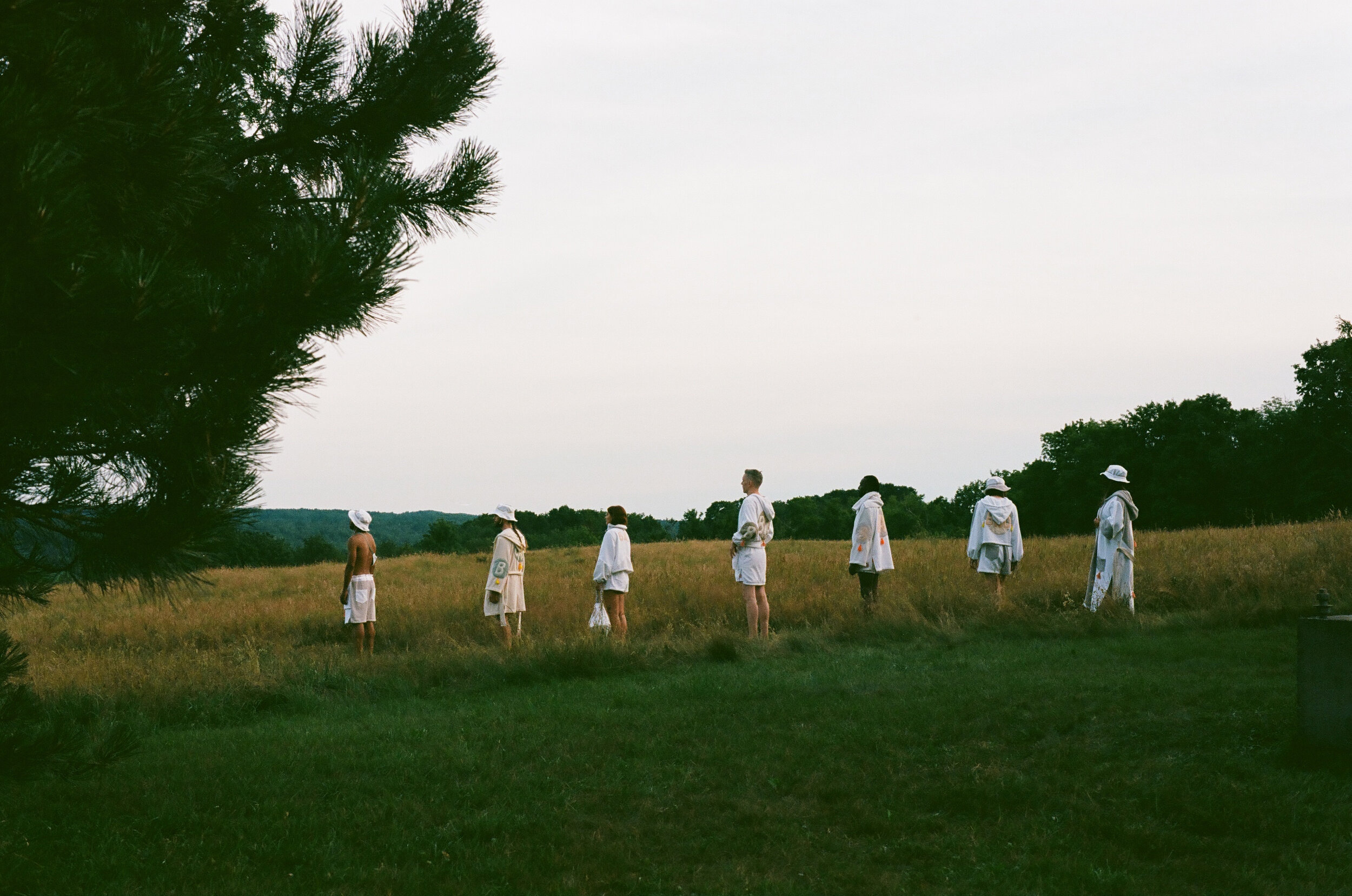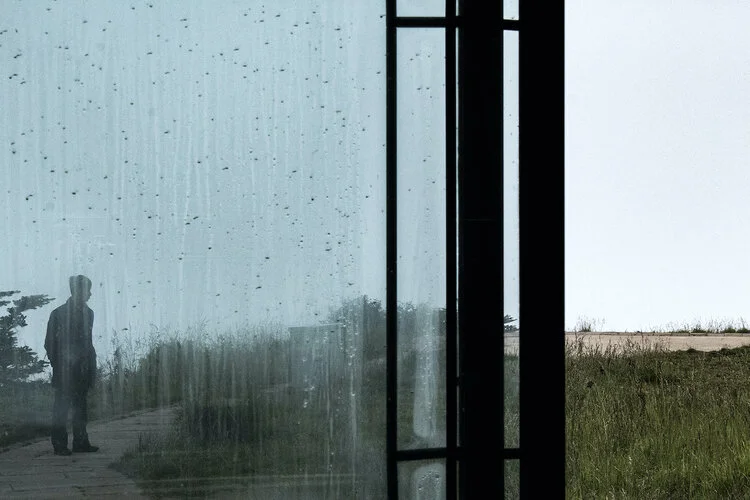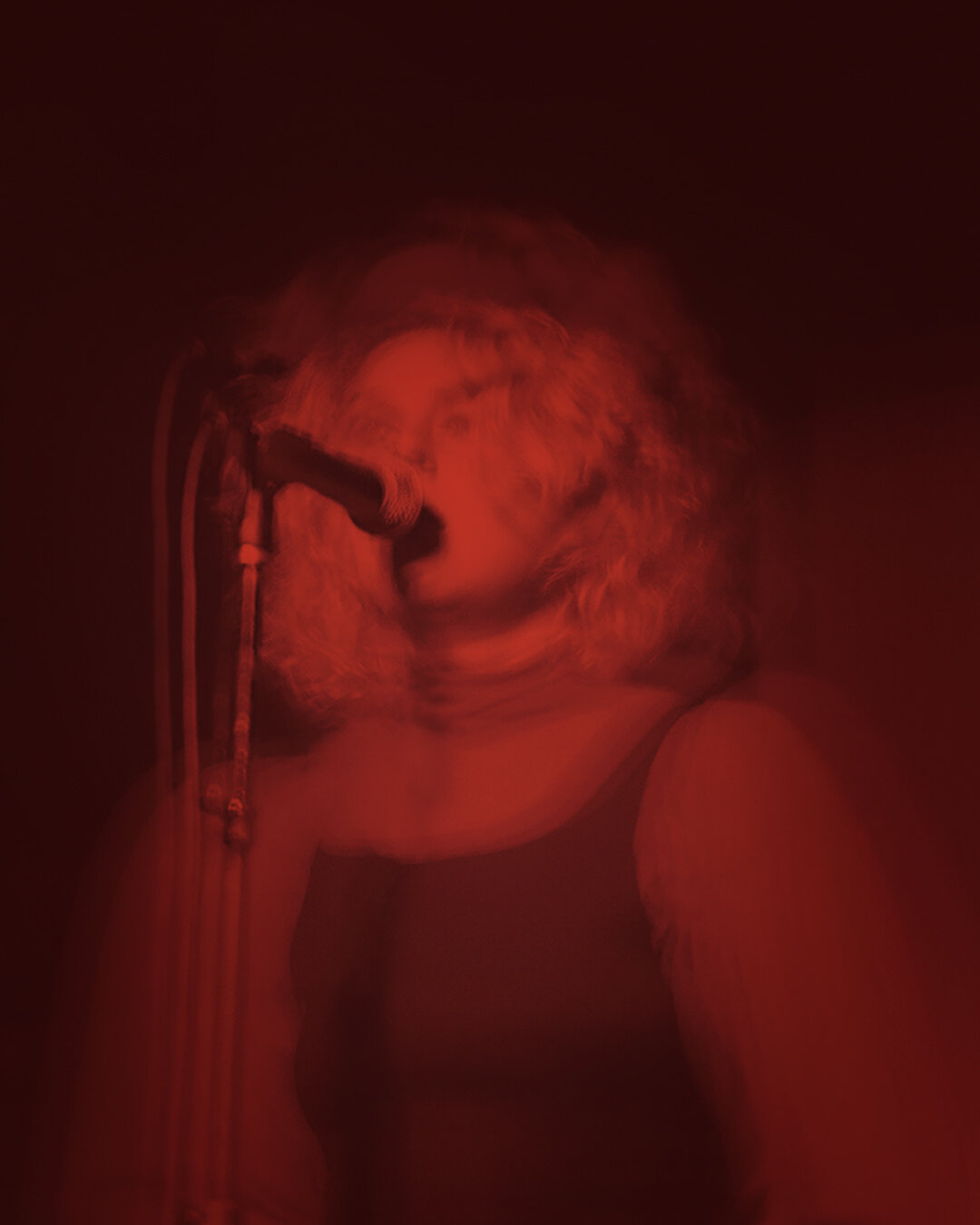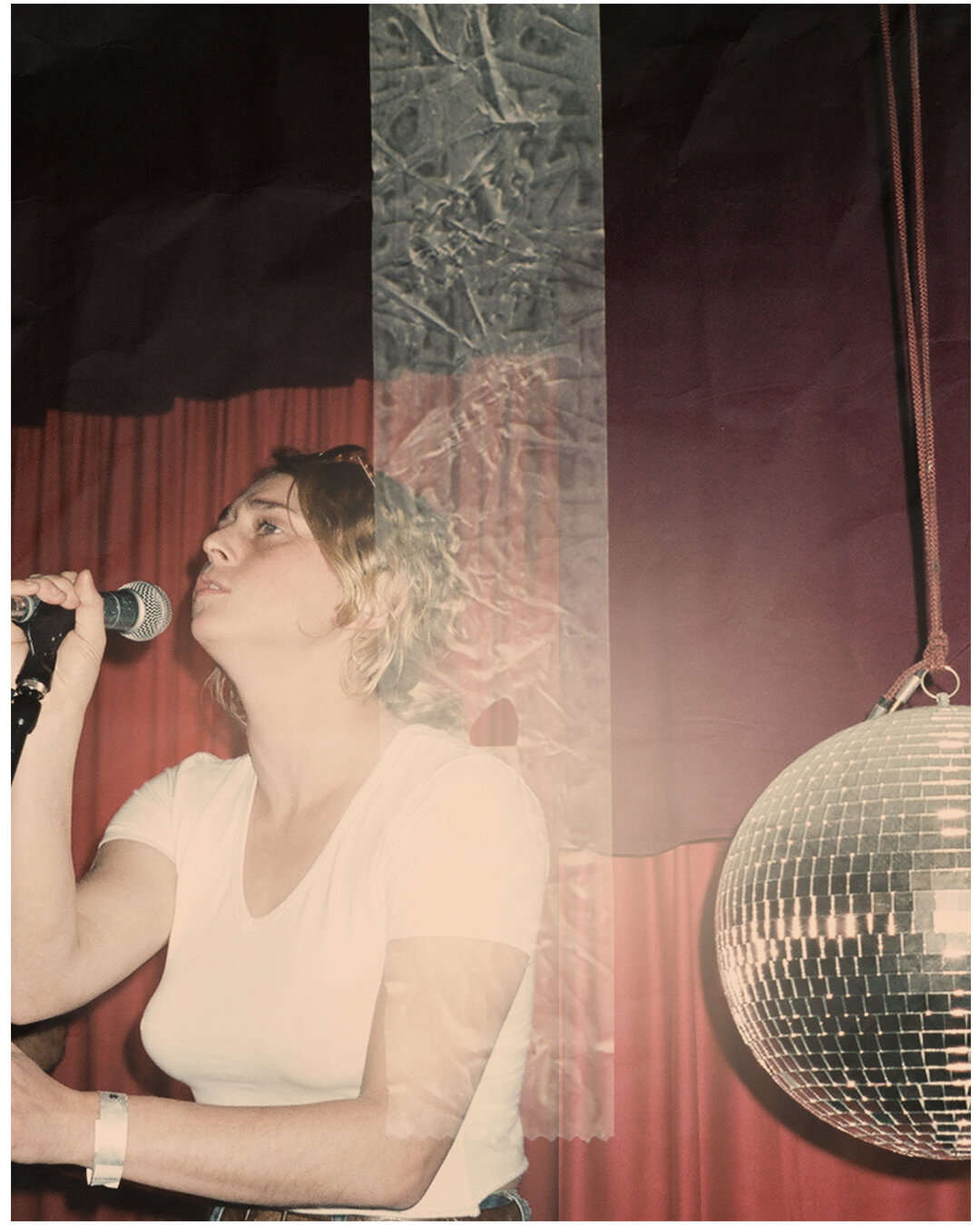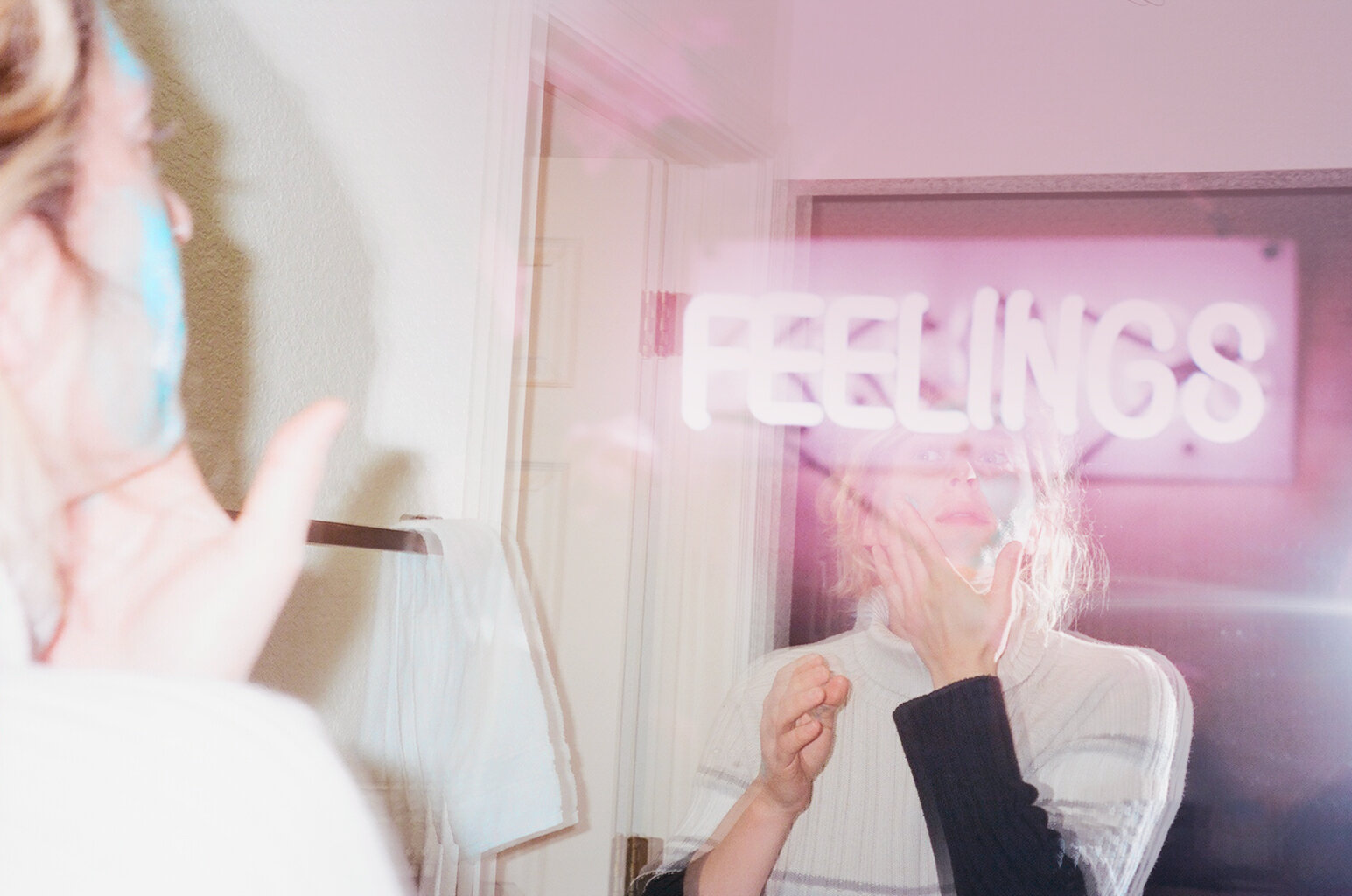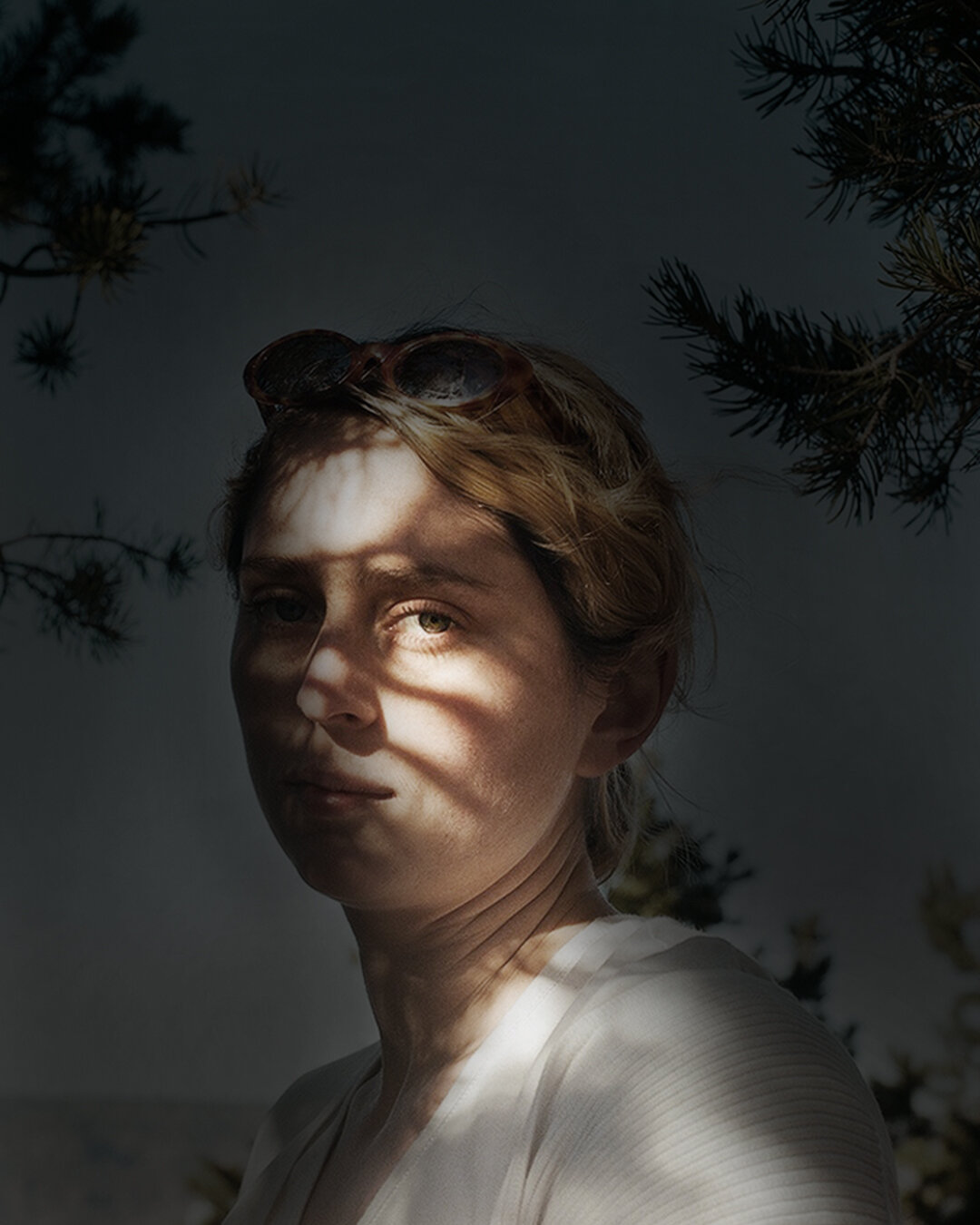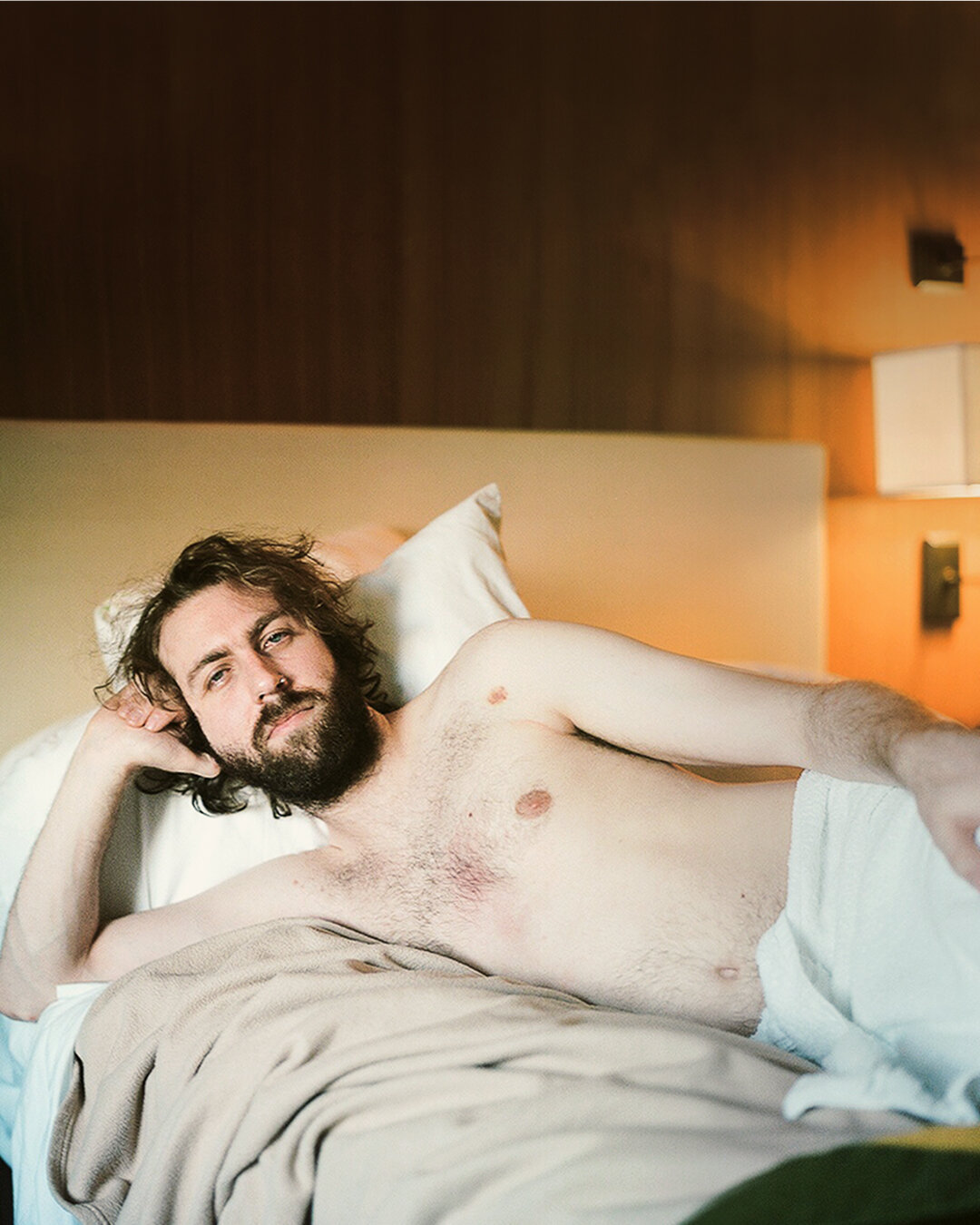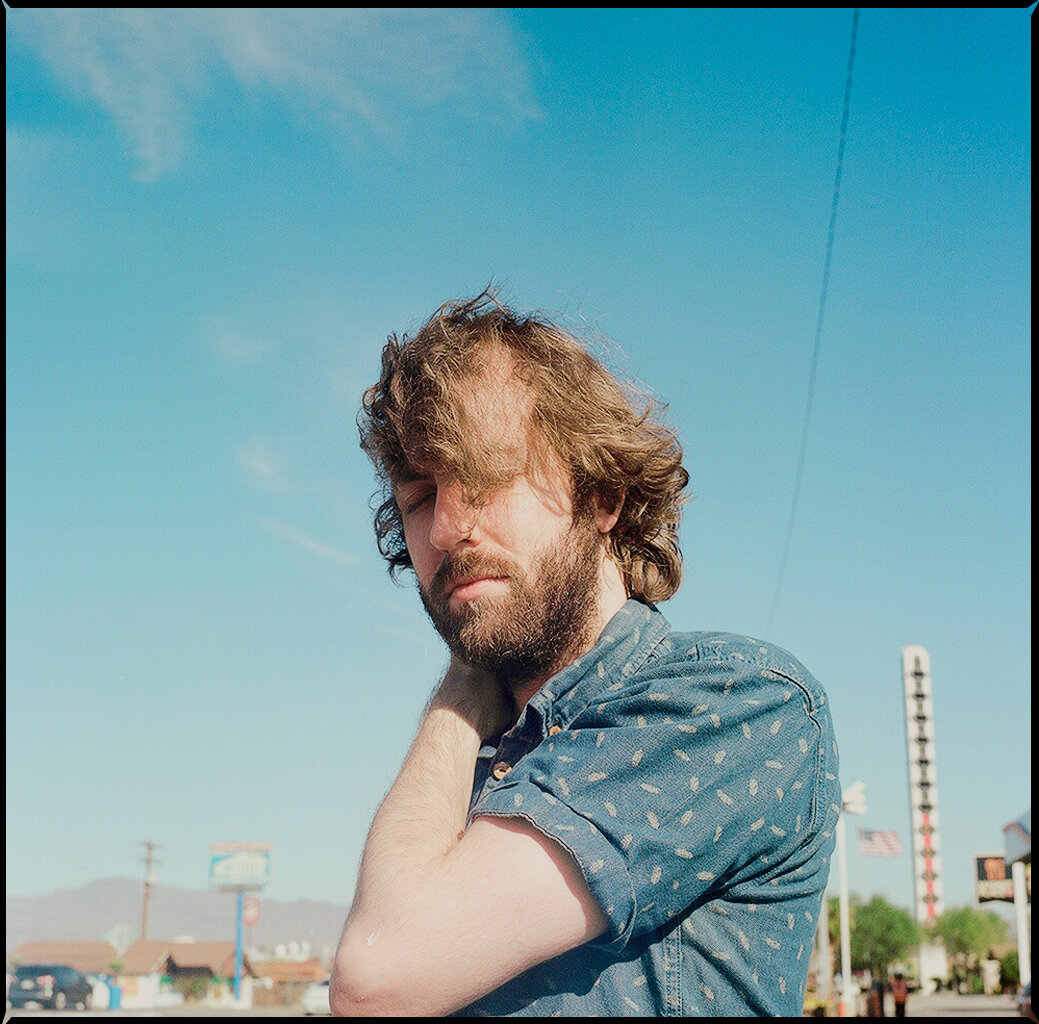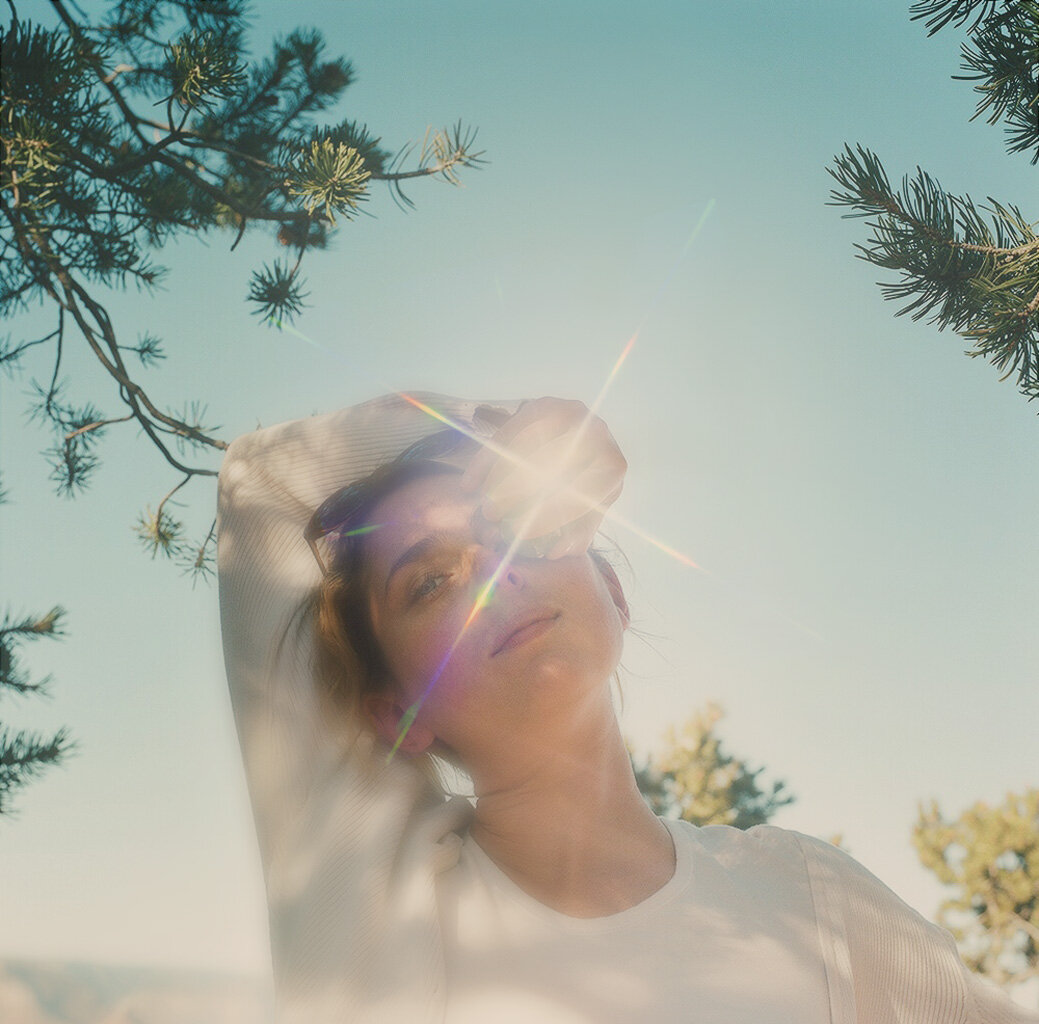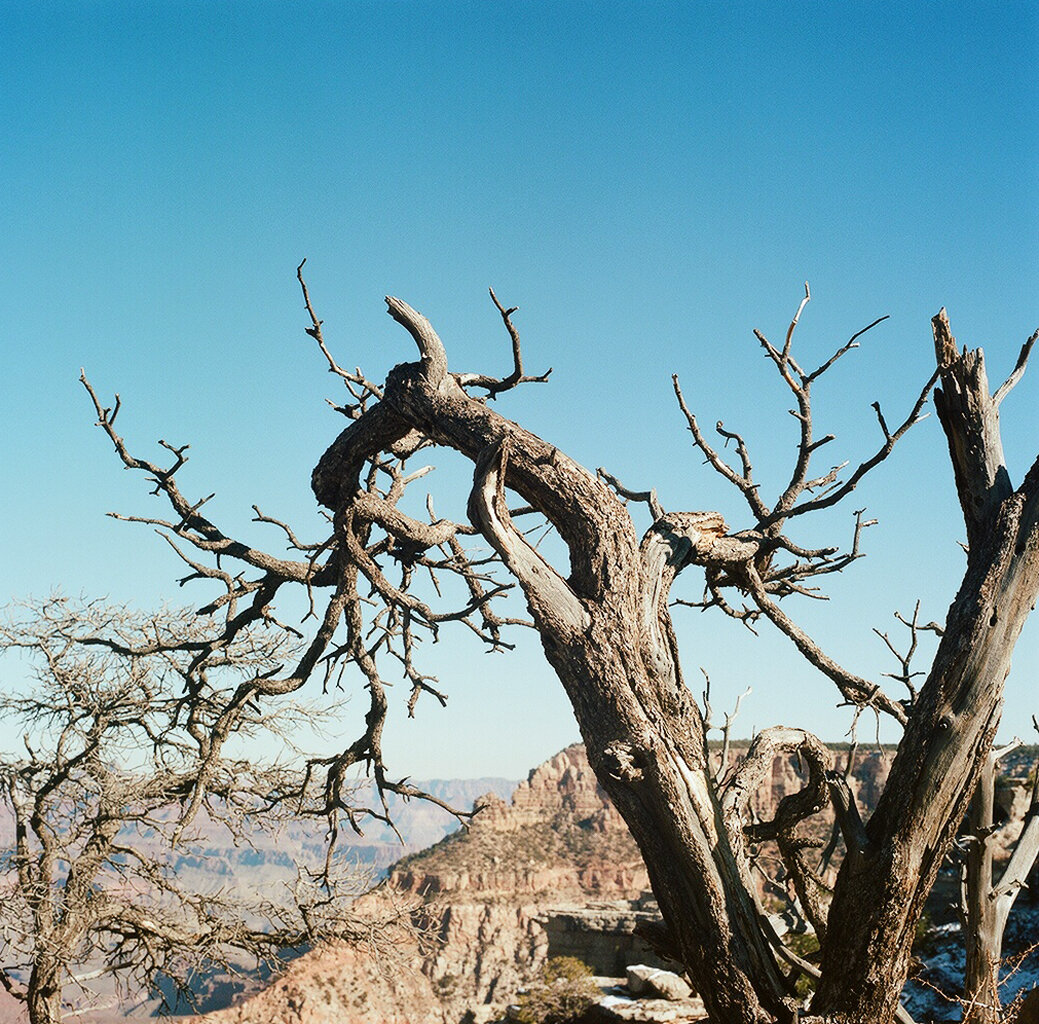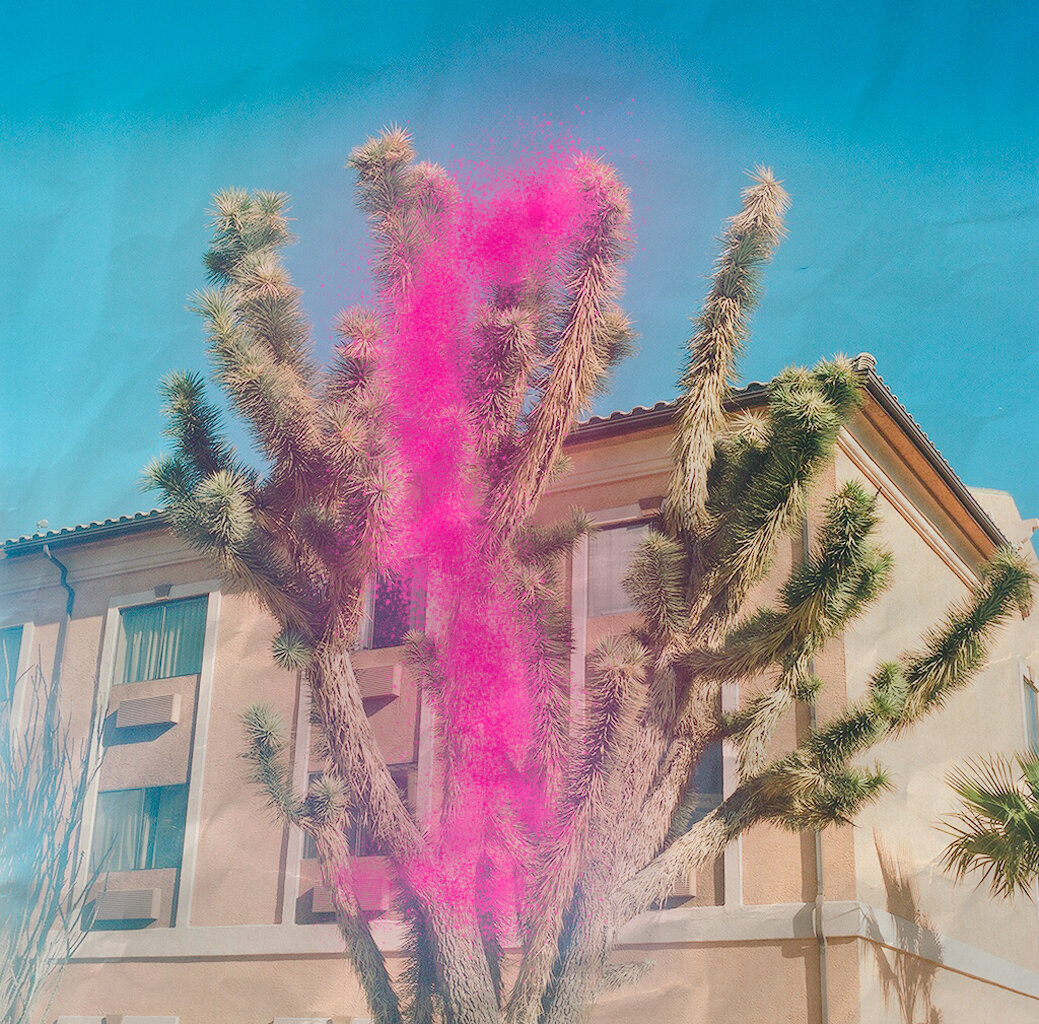Artist Spotlight: Sophie El Assaad
Hello, and welcome to a small walk-through of the world of Sophie El Assaad.
Sophie is an award-winning designer, director, and theatre-maker, and she cannot help but ooze her lovely sweet creative aura. I would describe her energy as a light fluffy mist that may crack with a low rumble or quick flash of lightning.
With her company, Theatre Nuaj, she has developed the project Black Balloon in many iterations: live outdoors in Centaur Theatre’s Portico Project late 2020, as Leila, a short film presented at Centaur Theatre’s 2021 Wildside Festival, and through multiple residencies.
This interview was held over two sessions with the intent to give a non-linear progression and experience of Sophie’s thoughts and world through visuals, direct quotes, as well as some snippets of her work or inspiration.
Sophie has curated a playlist here, that I would encourage you to listen to as you read through.
Segment from experimental video ( Sophie El Assaad, circa 2014)
I thought about this word yesterday.
[ Underbelly ]
Maybe I should have used it when describing themes I like to work with artistically; the hidden violent side that exists in people.
“For my birthday, my dad got me a cake, my mum got me a cake, and my sister got me a cake. It was perfect.”
On working in residency on Black Balloon:
In the past, I approached work via building a very solid core and working my way out of it, but what my last creation residency has done (working with dancers and movement actors) was it allowed me to be use impulse and intuition, working from the outside in, and discovering what that means afterward — the whole process of trusting the work and the process has been super interesting — very scary and always kept me on my toes, but, in the end, amounted to something reliant on body and emotions rather than intellectuality.
I really like involving artists that don’t necessarily specialize in the medium, who can contribute to the piece in unexpected ways and teach me. I just love surprises. The actor who played Leila (Maria Marsli) was not an actor before we worked together, for example.
Segment from Sophie El Assaad’s video Leila, shown at the Centaur Theatre’s Wildside Festival in 2021 ( This process is made possible by the support from the Government of Québec and the City of Montréal as part of l’Entente sur le développement culturel de Montréal, and from the Canada Council for the Arts)
Sometimes in film, I think that theatricality is lost because you have the liberty to take many takes to get it exactly how you want and perfect it. Filming a mistake rather than having to start again could be a form of theatricality in video that I am interested in exploring. Those moments really drive me - those moments of live, unpredictable human behaviour, mistakes.
I really love paying attention to the little details that happen in the in between space — the micro moments before going into action. Observing that – it’s so beautiful when you can see it and take the time to watch the brain processing and how it translates through the body.
It’s been amazing to shift my process upside down and give more control to other artists involved in my process- it’s liberating and collaborative! It leaves a lot of room for surprise and the unpredictable.
The photo was taken by Sophie El Assaad of Chadia Kikondjo for the project Black Balloon: Portico Project. 2020
An important image for Black Balloon was the moon. There’s a theory that the moon was created by a collision that happened between the earth and another planet and all the debris that was created from the collision that was floating around the orbit of the earth came together through gravity to form the moon. So it was through destruction that this essential part of our world was created.
“I’ve always wanted to be the kind of person to memorize poetry and say it to someone in the right moment.”
On decolonizing work and family history:
I am trying to decolonize my work by doing a lot more research into my own culture and bringing that into the process. I’m Lebanese, and I grew up in Bahrain, but I find I am very Western in how I was brought up; my mum is British, and I went to Western schools. So everything I learned in terms of history and art is from a Western perspective. So I’m going through this process right now — it’s kind of like an identity crisis or rebirth — of rediscovering my father, his culture and baggage, through my art. In a way, it feels like the longer I am physically away from my Middle Eastern roots, the more I try to get closer to it through my work. There is an invisible thread tying me to the sea, the sounds of street cats and the call to prayers, the salt in the air, the sand and the rocky desert. It’s like a past life that I constantly mourn. Even though I love my current life and probably wouldn’t move back, there is a certain void.
Image of my paternal ancestors. My grandmother is the young girl between the man and woman.
My dad shows his love through cooking. Every Sunday, my dad cooks and my sister and I go and spend time with the family (as much as we can). He actively plans his weekend around what he is going to cook for us. It’s a great way to bring me back to my past living in Bahrain, or summers spent in Beirut with family, because he mostly cooks Lebanese food (even though my mum’s British palette doesn’t always leap for joy at it). He’s a very silent man and there's a lot about him that I find very mysterious. Sometimes it’s hard to connect. That’s kind of why I feel driven to researching and creating through my ancestral culture. It’s also a way for me to connect with and rediscover my dad.
Image of a broken mirror (photo by Sophie El Assaad)
Something that has been inspiring me lately are the traces of life that you can find in dead material. I am obsessed! An example would be a shattered mirror – it holds the traces of the action in its appearance. It has so much energy locked into its absolute stillness.
Flayed Man Holding a Dagger and His Skin, From Juan Valverde de Amusco, Anatomia del corpo humano, 1560
Some of my favourite ways of working costumes are when I can put a lot of energy or emotion into a fabric – new fabric (especially when it is machine made) is “dead”, but the more you manipulate it, the more it absorbs your energy and holds traces of that love or hate – like human skin. You can often tell the kind of life a person has had from their skin and it’s the same with material. If you give love to material, you can see it. And I try to put that into consideration as much as possible when I’m thinking of design and how I treat my materials. They’ll share their life story with anyone who’ll pay attention, using their own unique language.
I love the body. That’s why I love theatre, performance and dance. There is something I am really drawn to in certain art – it’s this primal connection that, as humans, we tend to neglect or actively conceal in our daily lives. I love to see the body do things that I don’t get to see in my daily life because it’s a part of my being that I don’t really get to explore. Witnessing our primal side, or the animal within us, is cathartic for me. There is a violence inside all of us that I think is dormant but easily awoken. We see it in times of war, or political hysteria.
“There is a secret part of me that I would really love to have more opportunity to explore – my clown.”
When I say clown, I mean a weird creepy out of control thing. I have this clown that I only present to some people. I don’t know what their name is yet, but she’s a troll. She comes out sometimes when I am in a special mood.
Self-portrait of one of my inner trolls. 2022
When I get into my clown, it just happens naturally and not very often – it’s funny, talking about it makes it sound as though it’s a real thing that is developed, but I have only recently discovered her. She comes out when I say something mean or that I consider unreasonable (or when I get exaggeratedly emotional/passionate) – “ah there she is! The troll is out”. It’s my way of coping with my inner animal.
I don’t know if stories belong to anybody – it’s not necessarily about where a person is from or what they have personally experienced, but how a story is told. I definitely think that if someone wants to talk about an experience or an identity that isn’t theirs, they need to make sure they work with people who have that experience or identity, to make sure the story is developed in an informed way. It is important to have that authentic perspective.
I think artists need to be accountable for how they represent people, especially if those people are marginalised in society and already have that weight to carry. There is an ethical question to ask about whether you are profiting from a situation that misrepresents others. I think there is great responsibility that comes with the privilege of being an artist who is given a public platform.
Unfinished painting of a horse by Sophie El Assaad
Image from a workshop of a creation piece by Sophie El Assaad ,2022. Lighting designed by Zoe Roux and modeled by Nasim Lootij.
Image from Sophie El Assaad’s video Leila, shown at the Centaur Theatre’s Wildside Festival in 2021 (Chadia Kikondjo as Mother Moon; This process is made possible by the support from the Government of Québec and the City of Montréal as part of l’Entente sur le développement culturel de Montréal, and from the Canada Council for the Arts)
On process:
I saw a lot of my early work as internships – there wouldn’t be a lot of budget or pay, but what I did get was experience and a platform, so I saw those as my opportunities to go all out and take risks (I also chose projects that really inspired me, so it fueled me in other ways than just financial). For me, the extra time put into the work was worth it. I don’t know if it’s what I would recommend to others, but it’s what I did to get my career started.
Costumes designed by Sophie El Assaad for the show Jonathan Livingston: A Seagull Parable, (Surreal SoReal/ Geordie Theatre, photo by Marie Andrée Lemire)
“If I have an idea I think, ‘Can I do it? Maybe not, but why not try and see what happens?’”
Mask created by Sophie El Assaad for the band Fleece for album Stunning and Atrocious in 2021. Photograph by Cameron Mitchell, Styling by Kayleigh Choiniere, Clothes by Lucas Stowe and modeled by Owen.
“I would also love to make a play about pigeons. Write a play, or ask someone to write a play and just have giant pigeons having a conversation.”
My pigeon friends Pin Pin and Smithy (the ones that live on my building, that I feed) – they’ve started this repetitive occurrence. Every morning they have a choir session. I don’t know if you’ve ever heard pigeons but they gather so close to my windows and it’s a cacophony of chirps and bubbles. It is so beautiful.
I have a fascination with birds. I love seeing little sparrows in the winter when they’re in the bushes — because they look like leaves but then they move around — so it becomes a sort of like, magical and alive bush.
I think recording rehearsals can be useful in my future projects – seeing how accidents can become pieces in themselves. But I also see it as a way of approaching the process. For example, what would happen if you filmed something, like a small gesture, edited it on video to slow down or twitch it, then brought it back into rehearsal. Being influenced by the technology and what that offers and finding how it can bring meaning is something I want to experiment with. I think it could bring unexpected approaches to movement and performance. Video is like a second pair of eyes, noticing the little details you can’t capture during a rehearsal.
“There is something about the early rehearsal process, the magic that comes during improv. Because it’s live and in the moment — it’s so raw and unrehearsed, completely reliant on intuition — it’s truly magic.”
Sophie El Assaad
Holly Hilts is a core member of Also Cool. She is a maker of things: theatre sets, jewelry and websites, currently based in Montreal.

